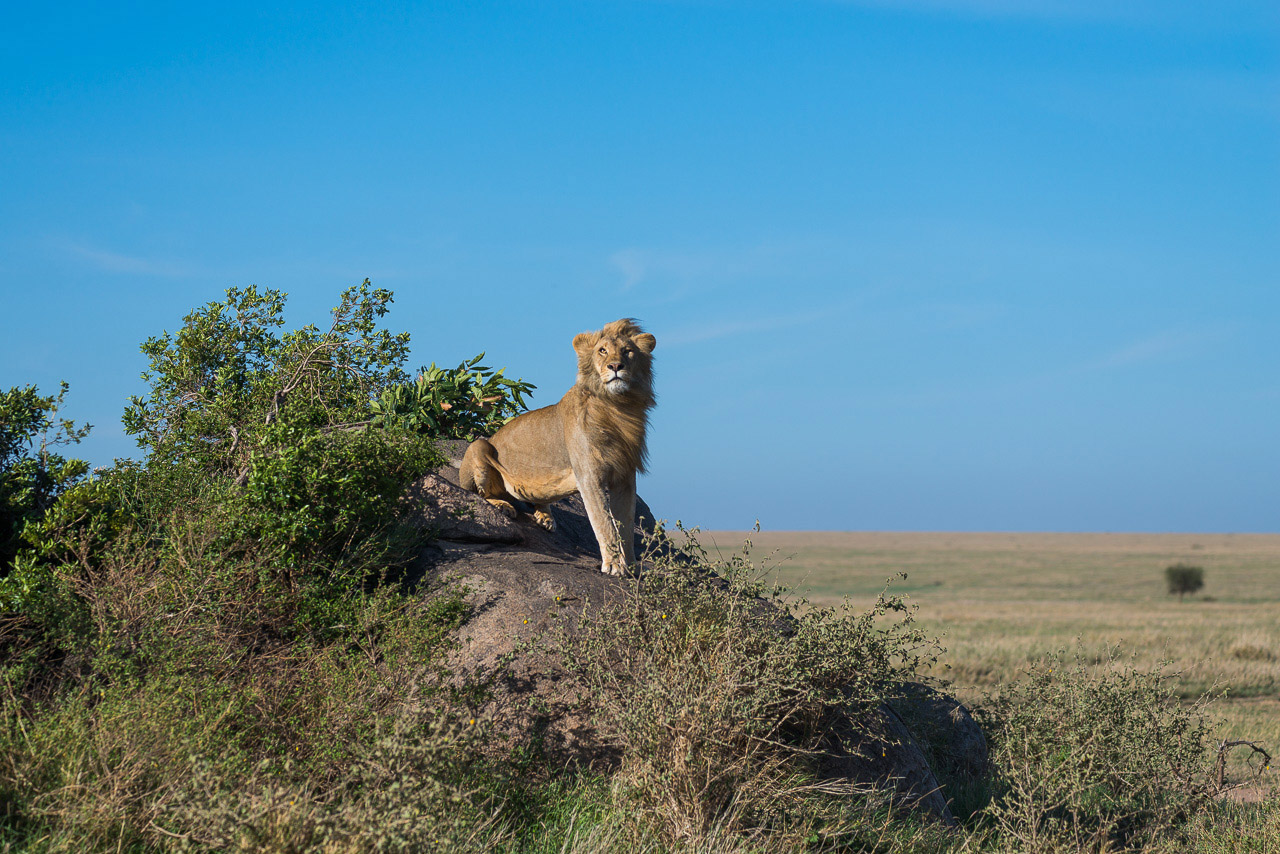





Accommodation
Guests at Kahawa Cottages are personally hosted by the owners Finias Laizer and Anita Warrener, our partners in Tanzania.
The three spacious cottages sit on the grounds of their home, a former coffee plantation, and each cottage includes two bedroom and two bathrooms with a shared sitting area and balcony. Guests have access to the main house to use the swimming pool, television and WiFi.
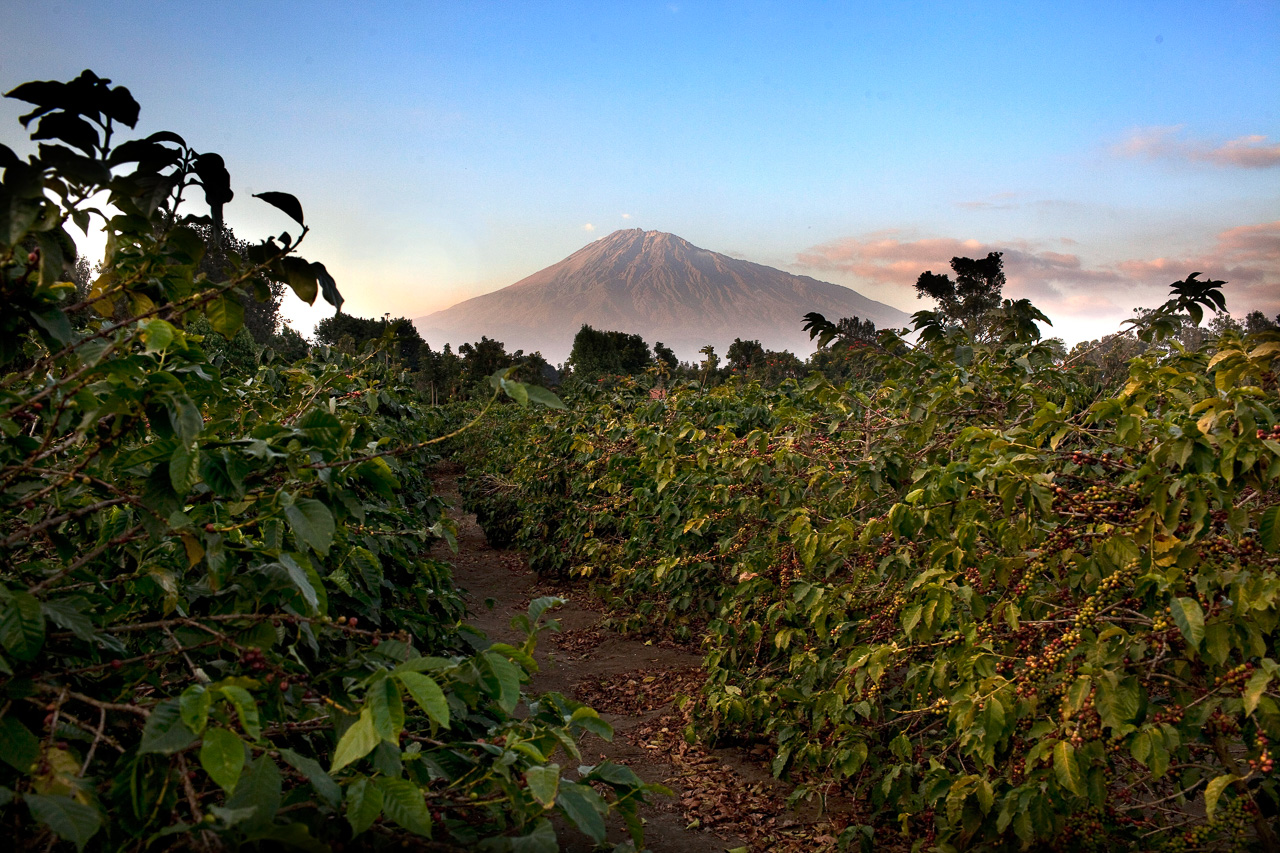
Most visitors spend one night here after arriving on their international flight before beginning their safari the next day. Kilimanjaro International Airport is located approximately one hours’ drive from Arusha on the road cmoing in from Moshi.
Arusha's most famous landmark is Mount Meru, a dormant volcano that rises more than 4,500 m out of the ground in the west. The Ngurdoto Crater is located on the other side of the park, and the Momella Lakes sit between.
Arusha itself has grown considerably in recent years and there are probably around 650,000 people living in the city. The population has increased tenfold since the 1970s! In addition to tourism, Arusha lives from the trade in coffee and agricultural products and also increasingly from the export of cut flowers. Arusha lies at an altitude of 1,400 meters above sea level and the climate is quite pleasant with an average temperature of around 25° Celsius.
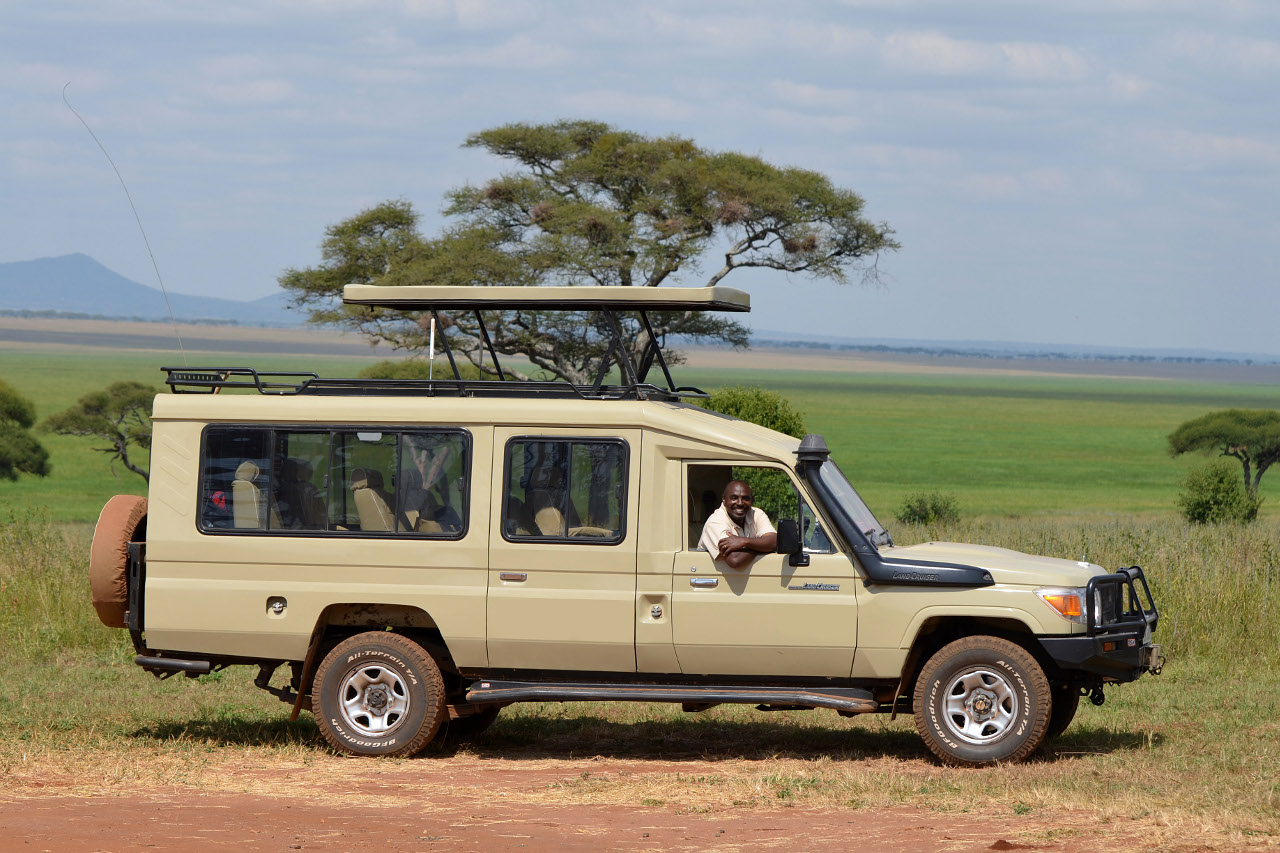
The comfortable Toyota LandCruiser 4 x 4 vehicles usually have six seats, a fridge with drinking water and a socket for charging camera equipment. The roof can be opened for game viewing - the classic safari in Tanzania.
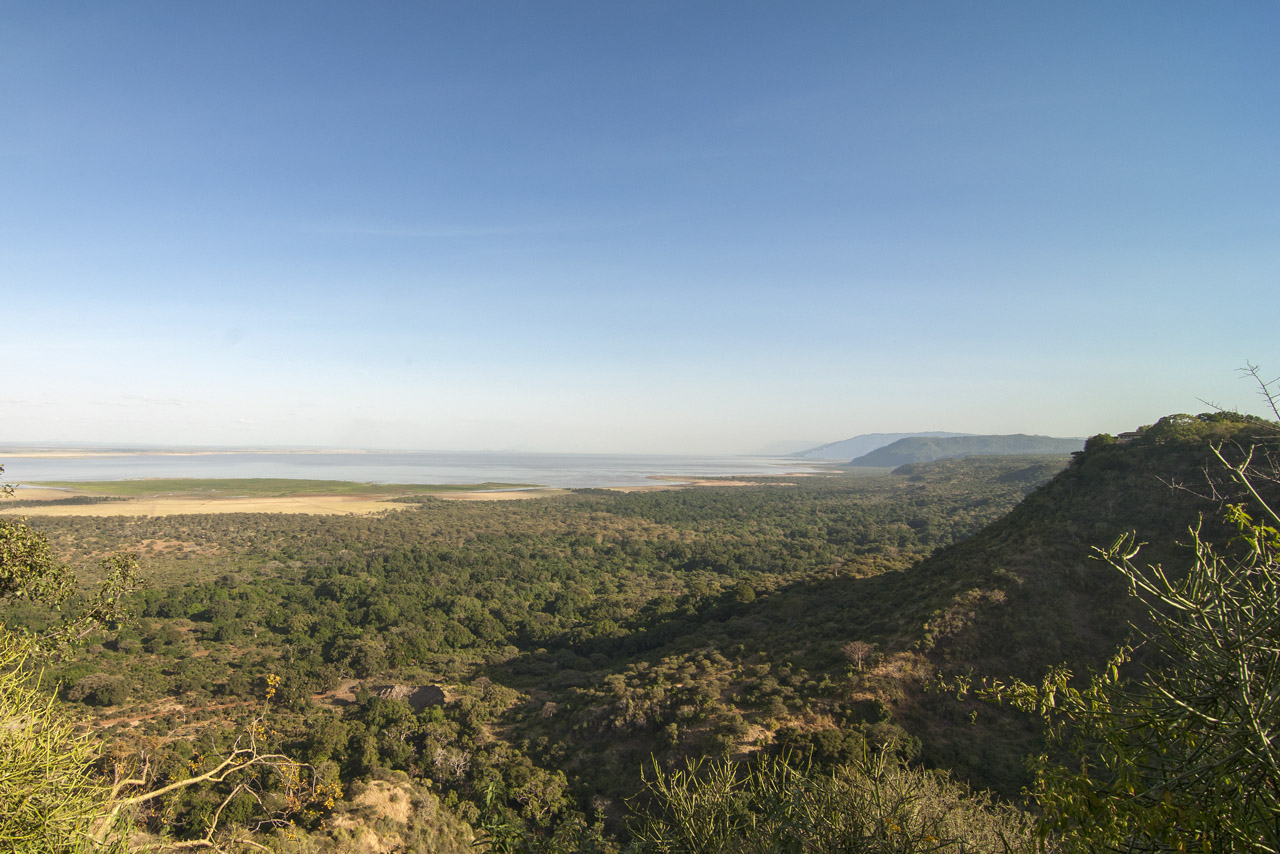
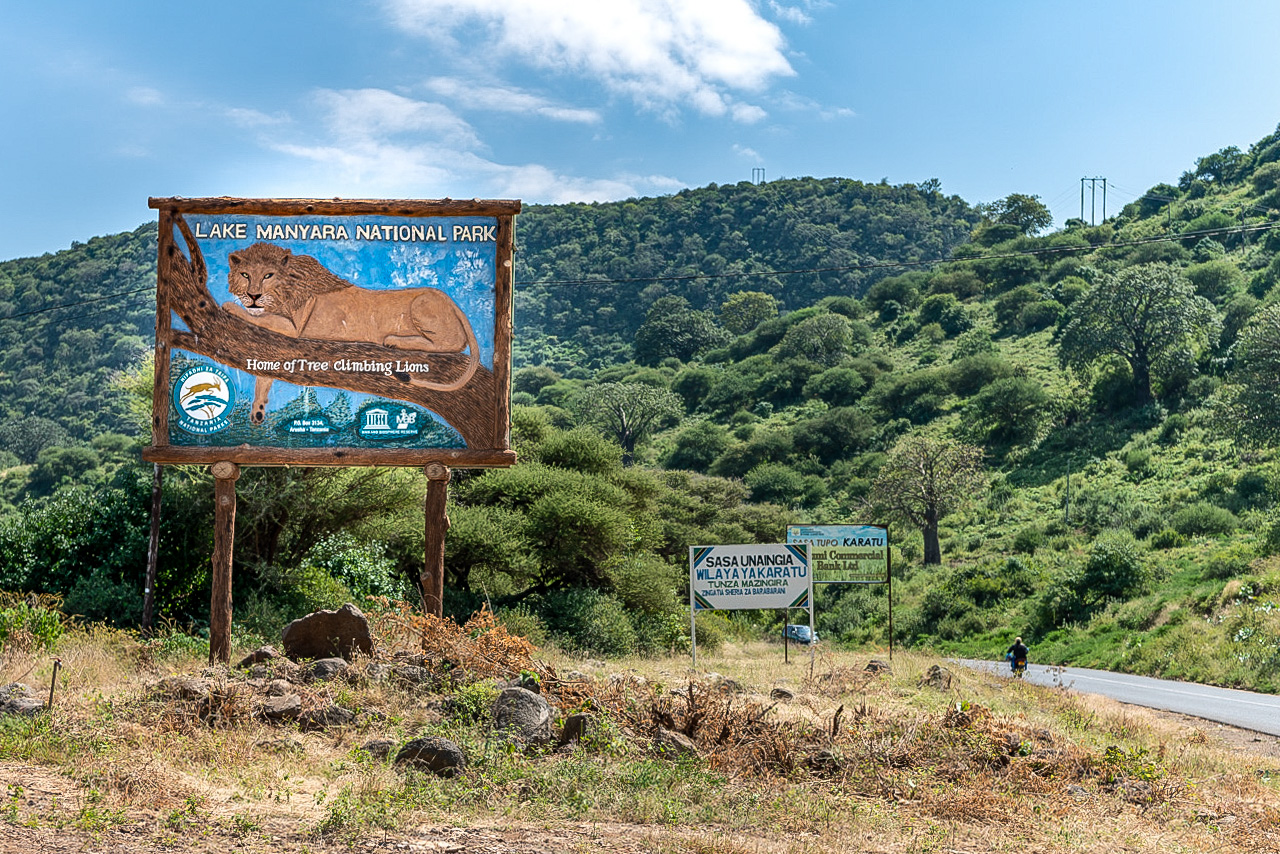
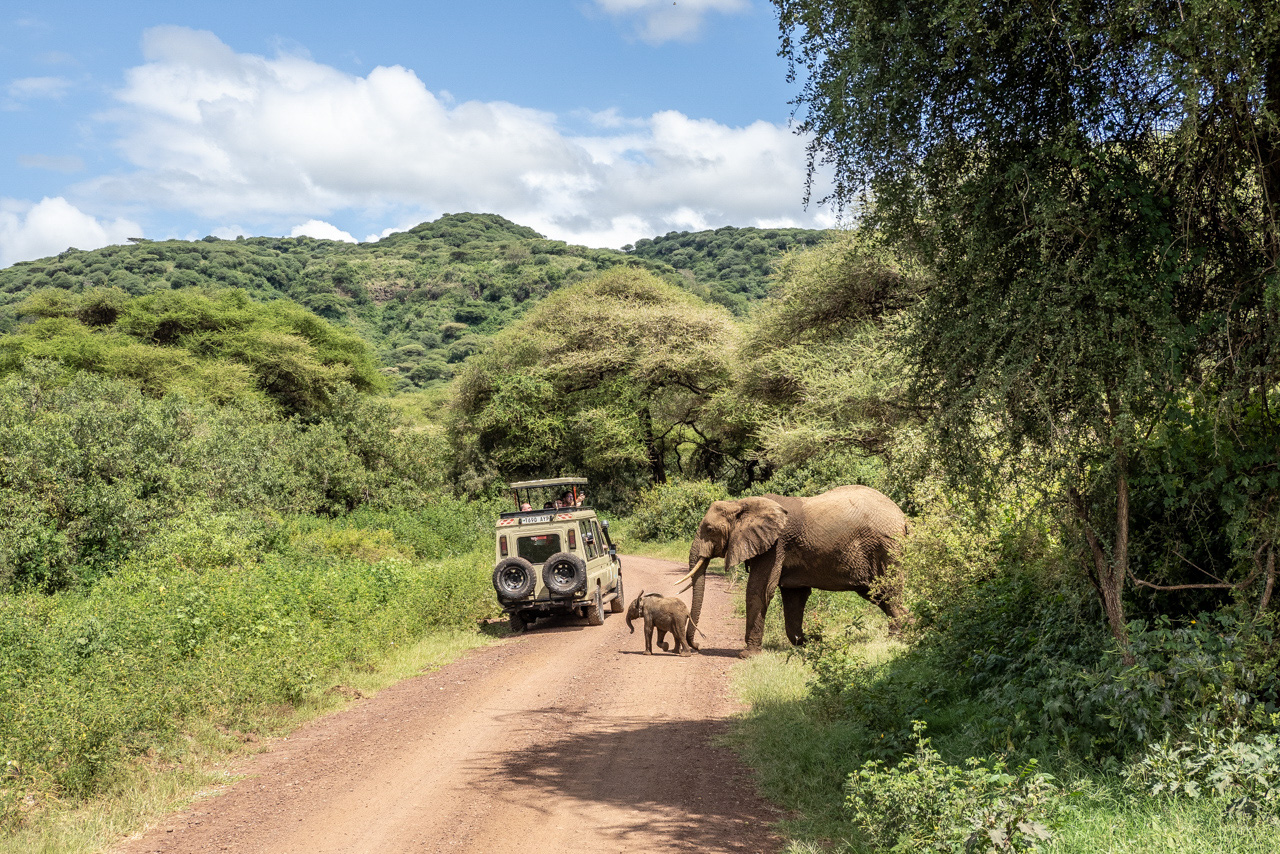
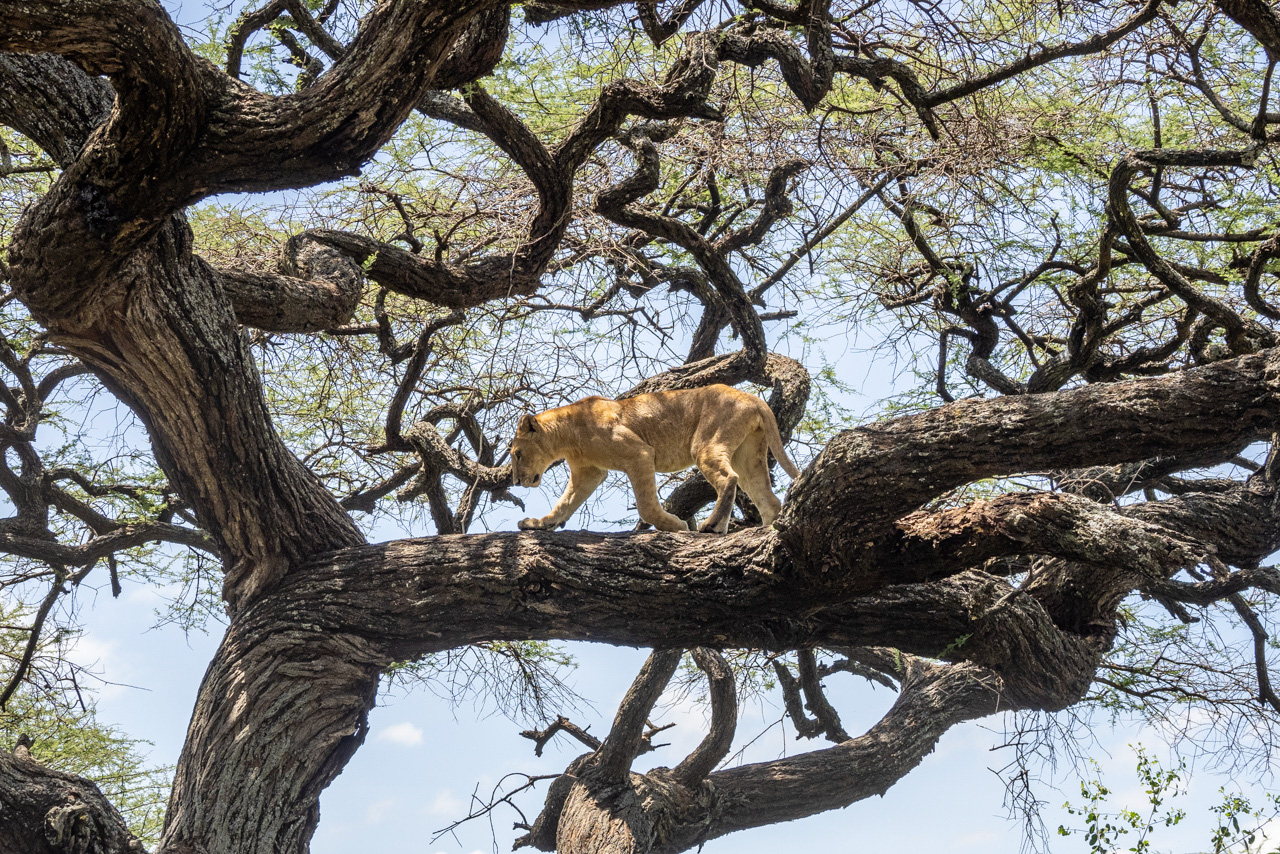
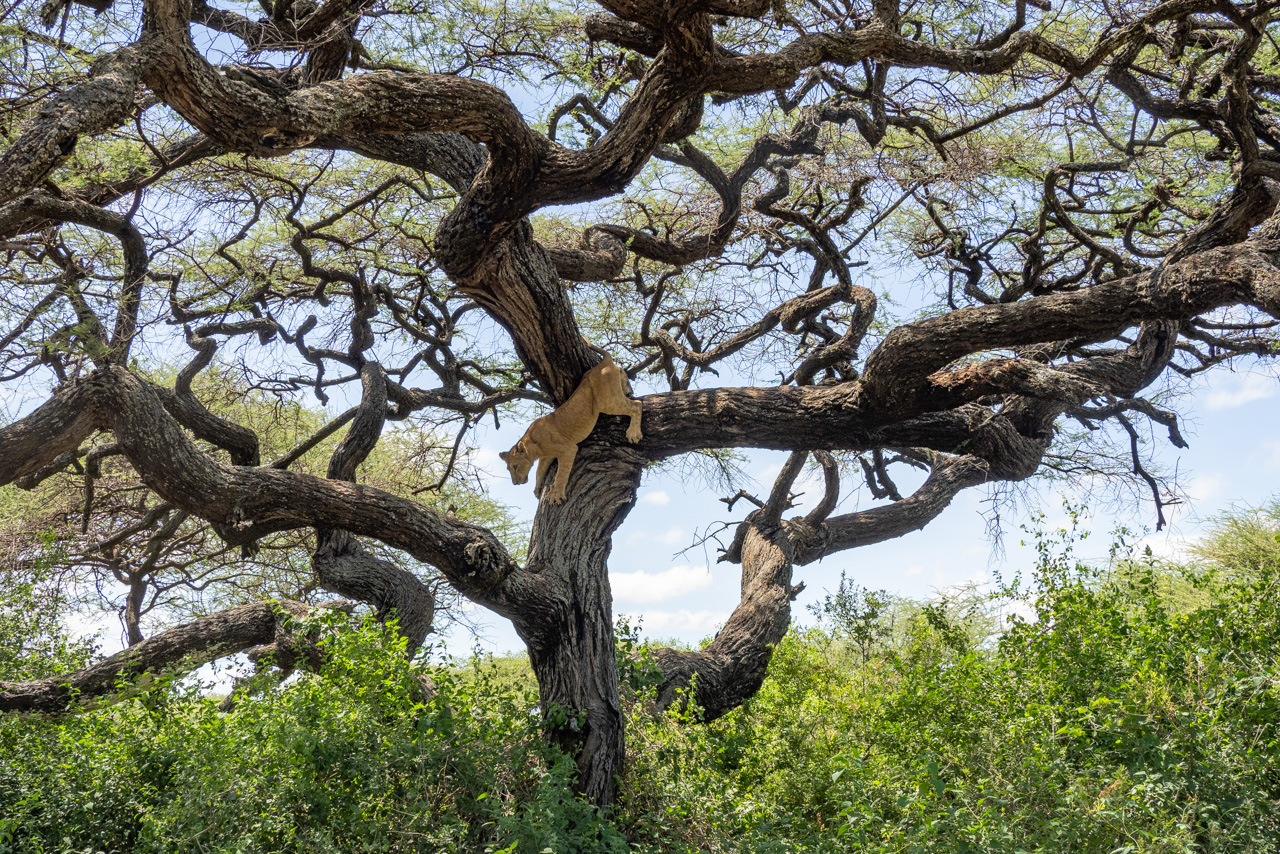
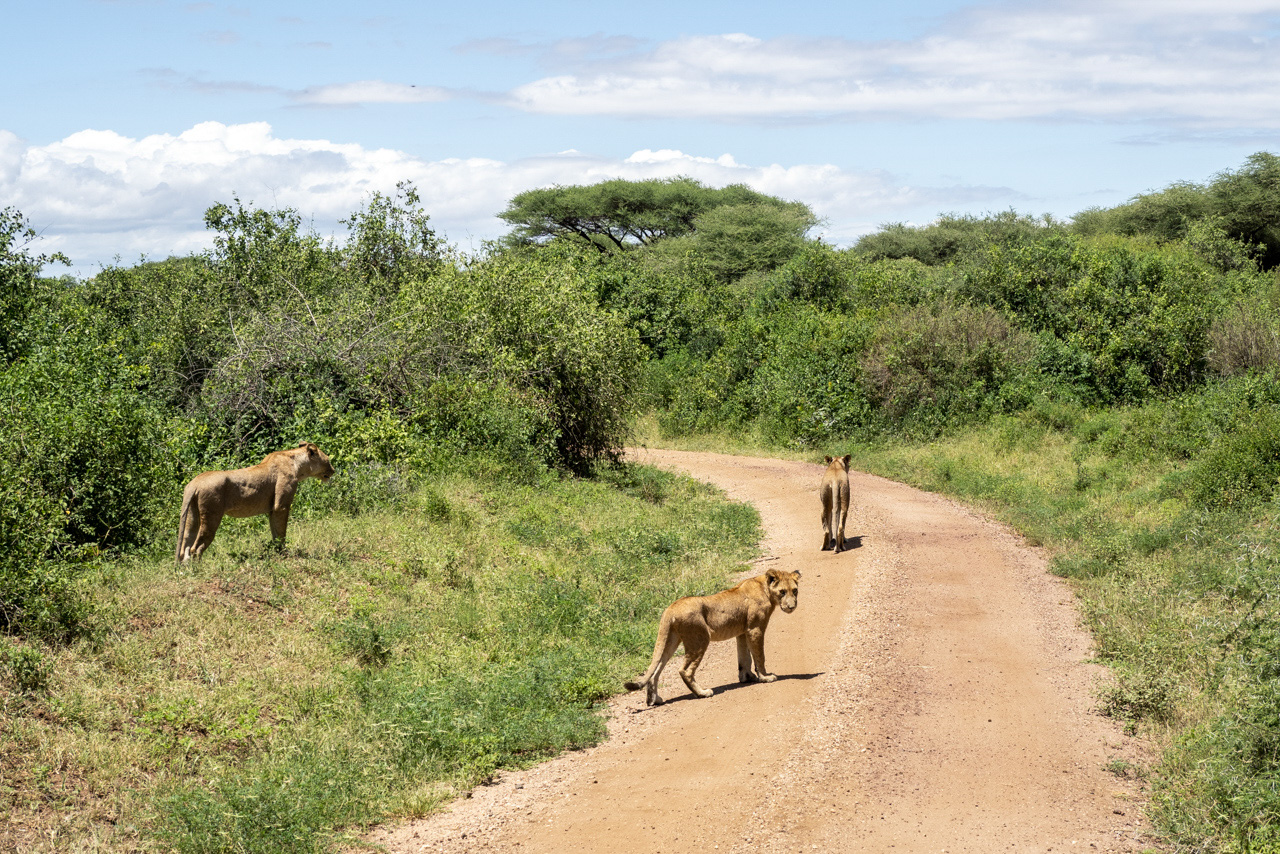
The northern gate of Manyara National Park is located 120 km west of Arusha close to the village Mto wa Mbu. If you like we may stop here for a walk to discover a bit of the local village life.
The park is renowned for its good concentration of elephant and tree climbing lion. It is also home to large herds of buffalo, giraffe, hippo and antelope. The area is also home to a conspicuous number of olive baboons, which gather in groups of up to several hundred. The flamingos on the lake, of course, provide a fascinating spectacle, and with over 400 species, it is also a birding enthusiast’s dream.
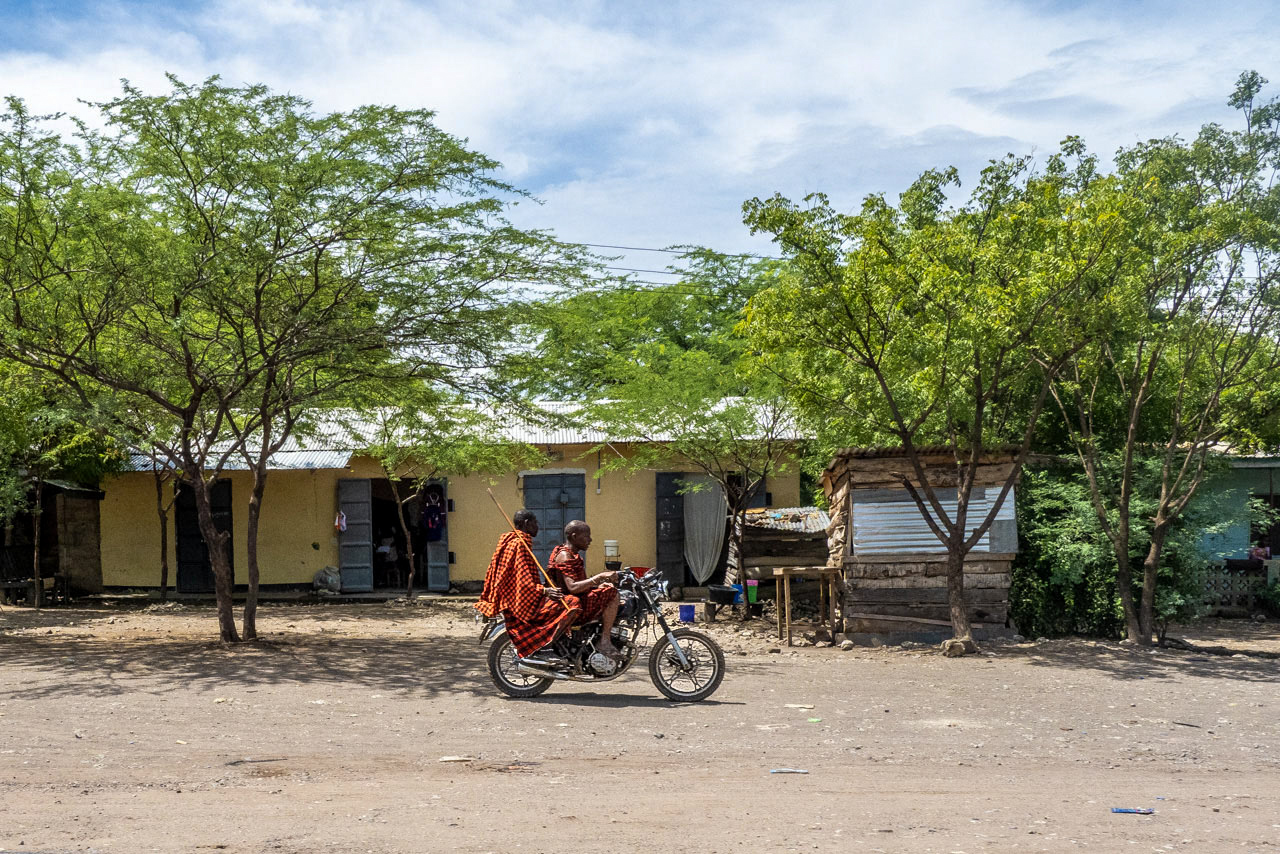
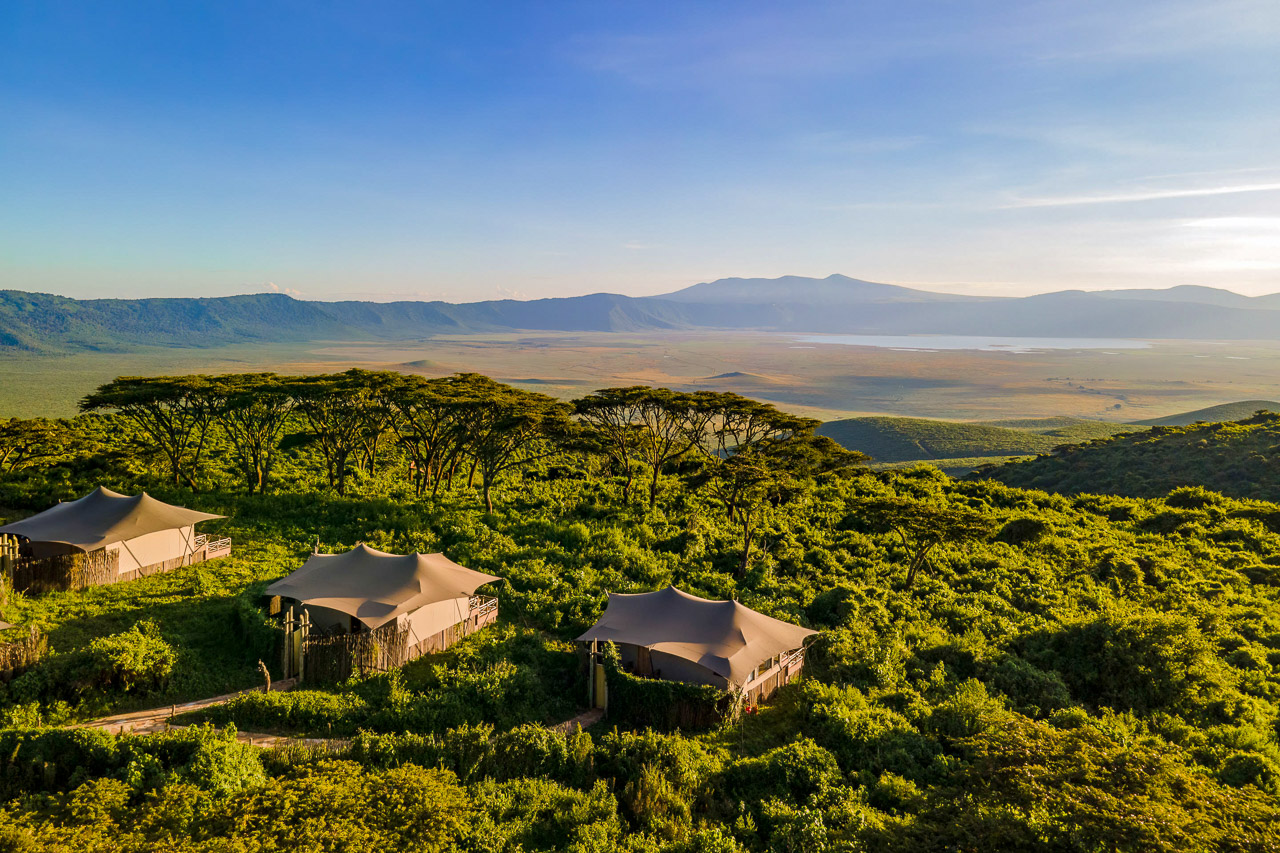
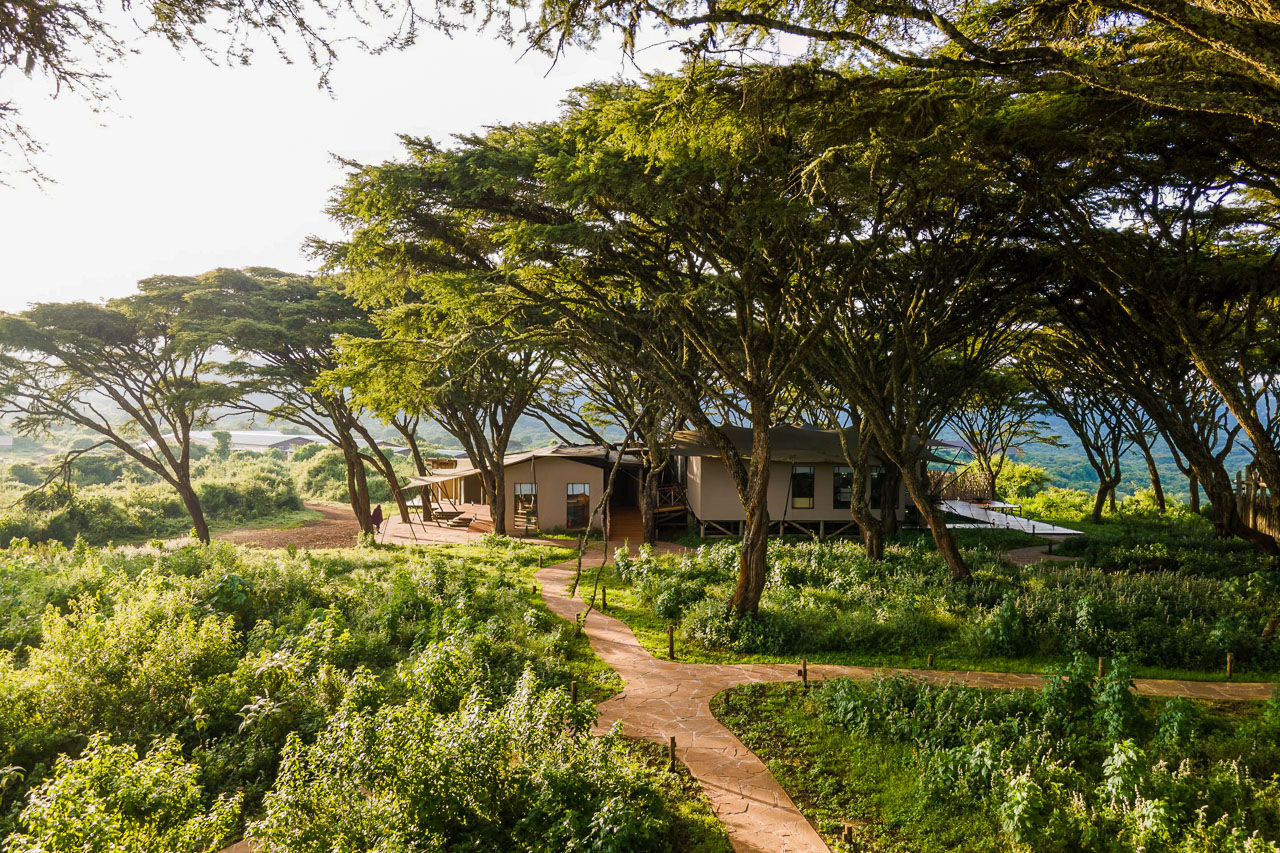
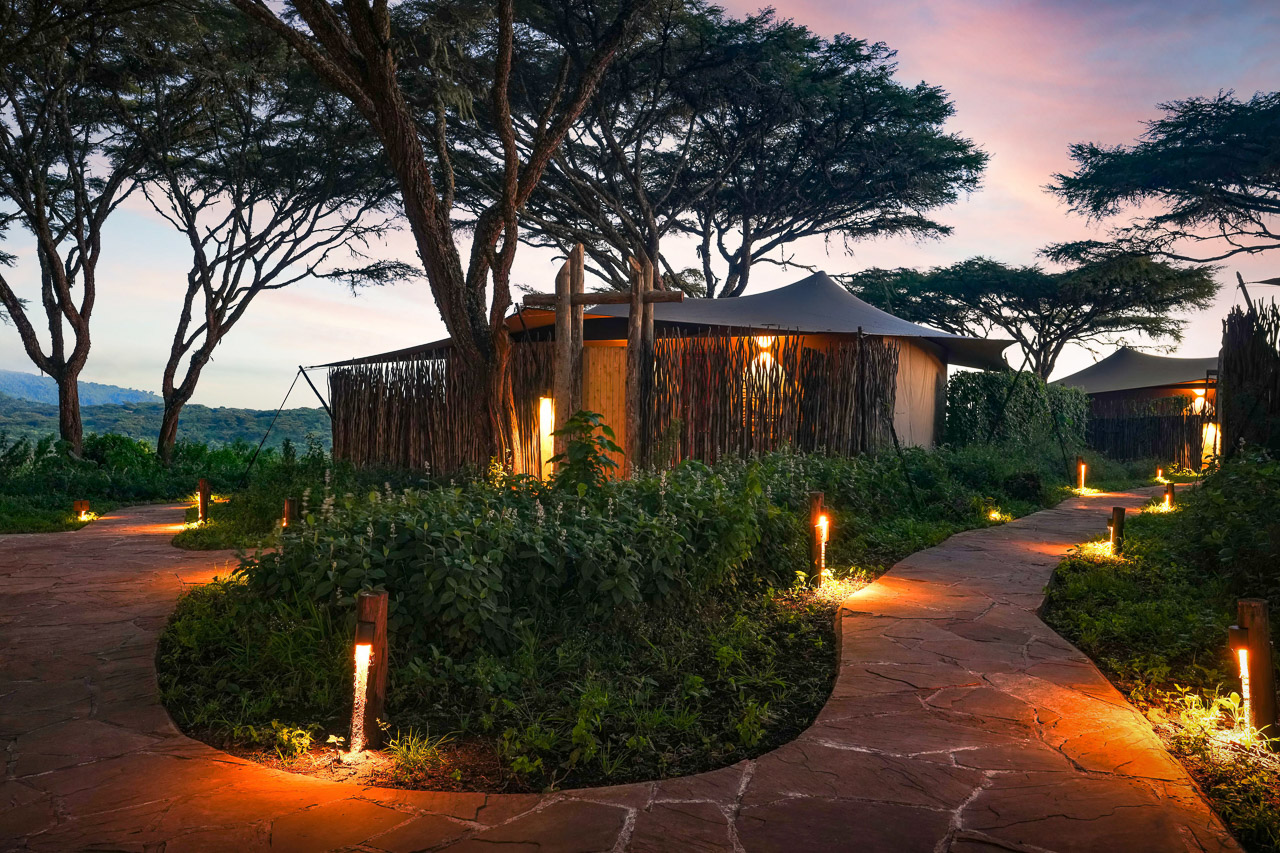
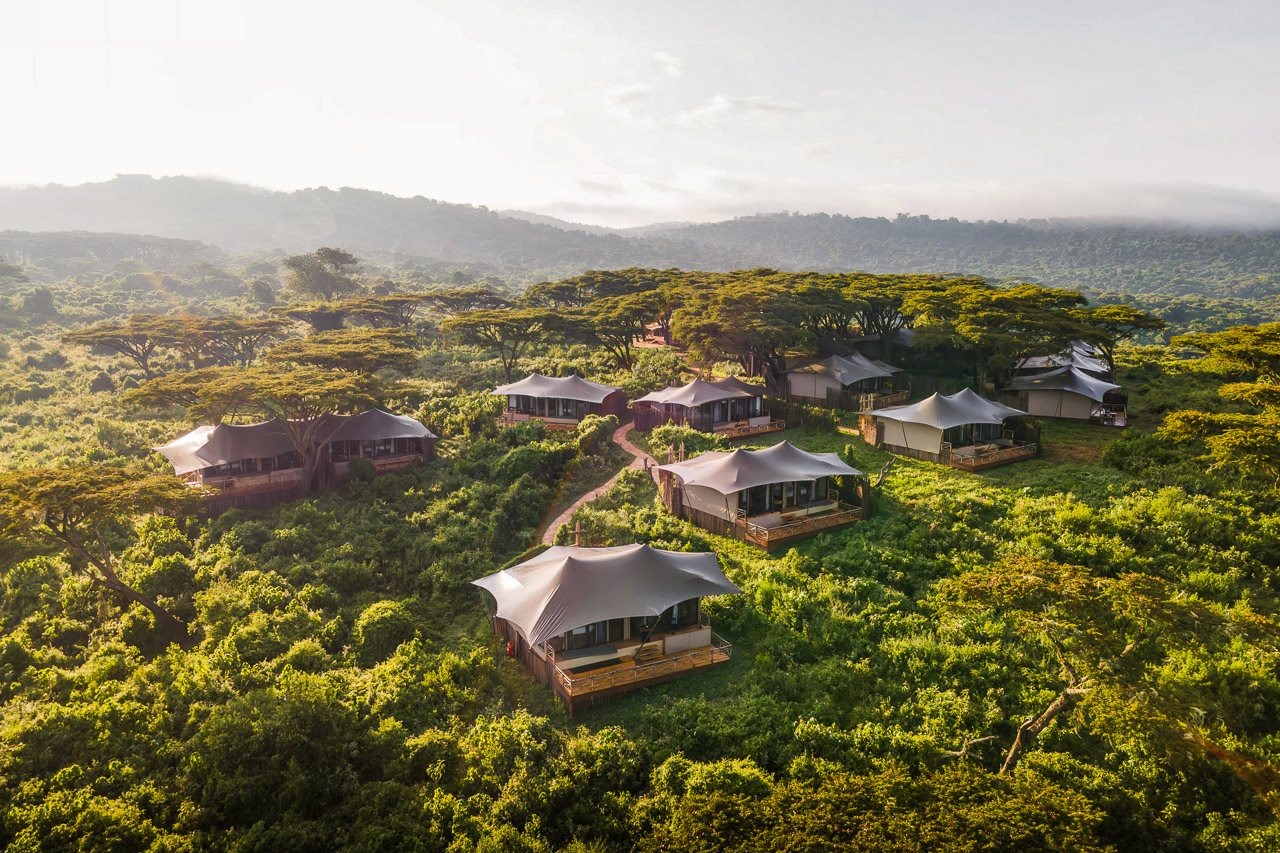
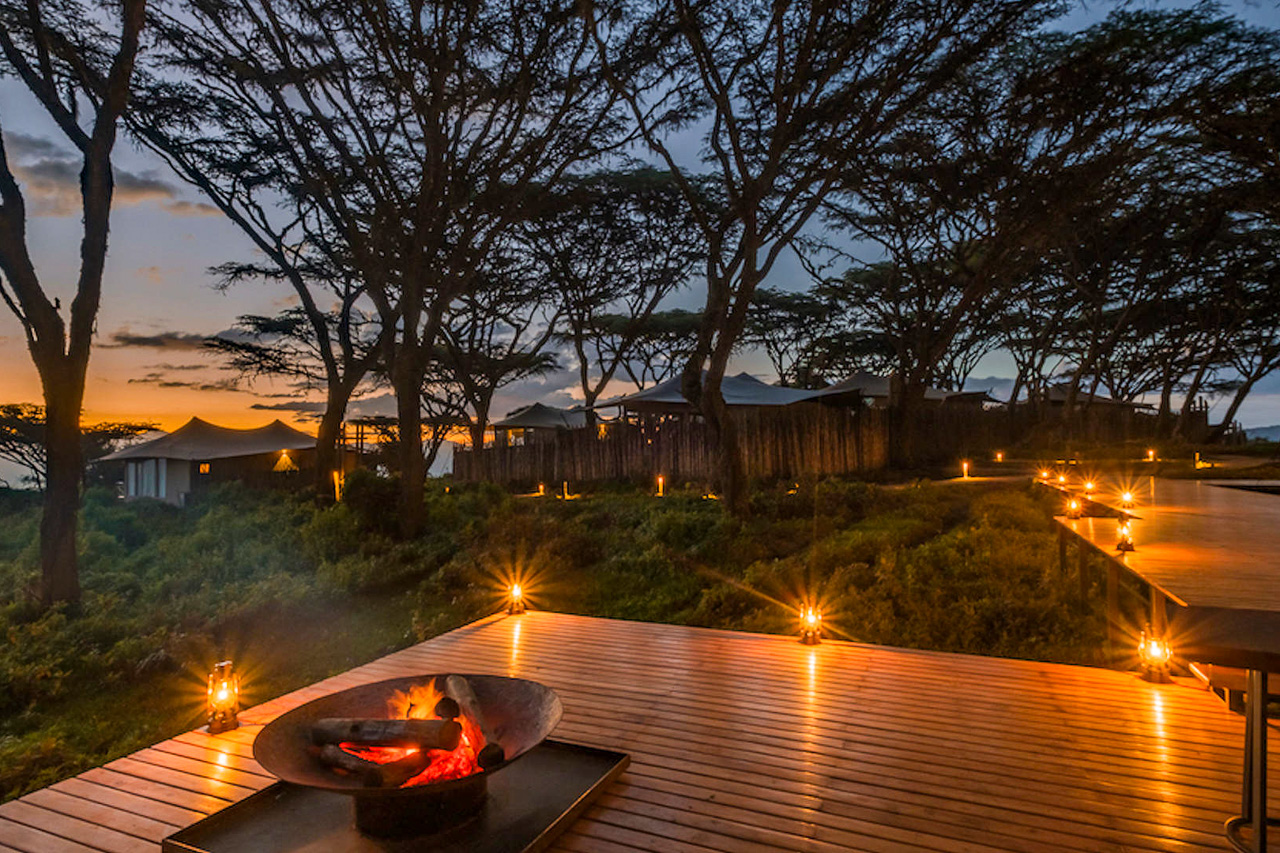
Accommodation
Crater's Edge offers 15 spacious tented suites, set in an accacia woodland not far from the Lemala access route and overlooking the crater rim. The suites consit of a bedroom with lounge and a gas fireplace, a walk-in wardrobe, a free-standing copper bath tub and a separate bathroom. Large glass sliding doors lead out to a private multi-level wooden viewing deck, complete with a telescope.
Some rooms can be made a twin. Two of the tents are joined to create a two-bedroom suite which is perfect for families or a group of friends travelling together.
The main area houses the lounge, the reception and back-of-house areas on the lower floor, while the upper floor is home to the bar, lounge, viewing deck and dining areas. Gas fires keep the rooms warm during the cooler months in the Ngorongoro highlands. Two large fire pits on the veranda are a great place to meet other guests for a pre-dinner drink in the evening.
The Ngorongoro Crater is the world's largest inactive, intact, and unfilled volcanic caldera with 19km in diameter and walls 600m high. Its floor covers 260 square kilometres and acts like a natural zoo, providing food for a high resident animal population.
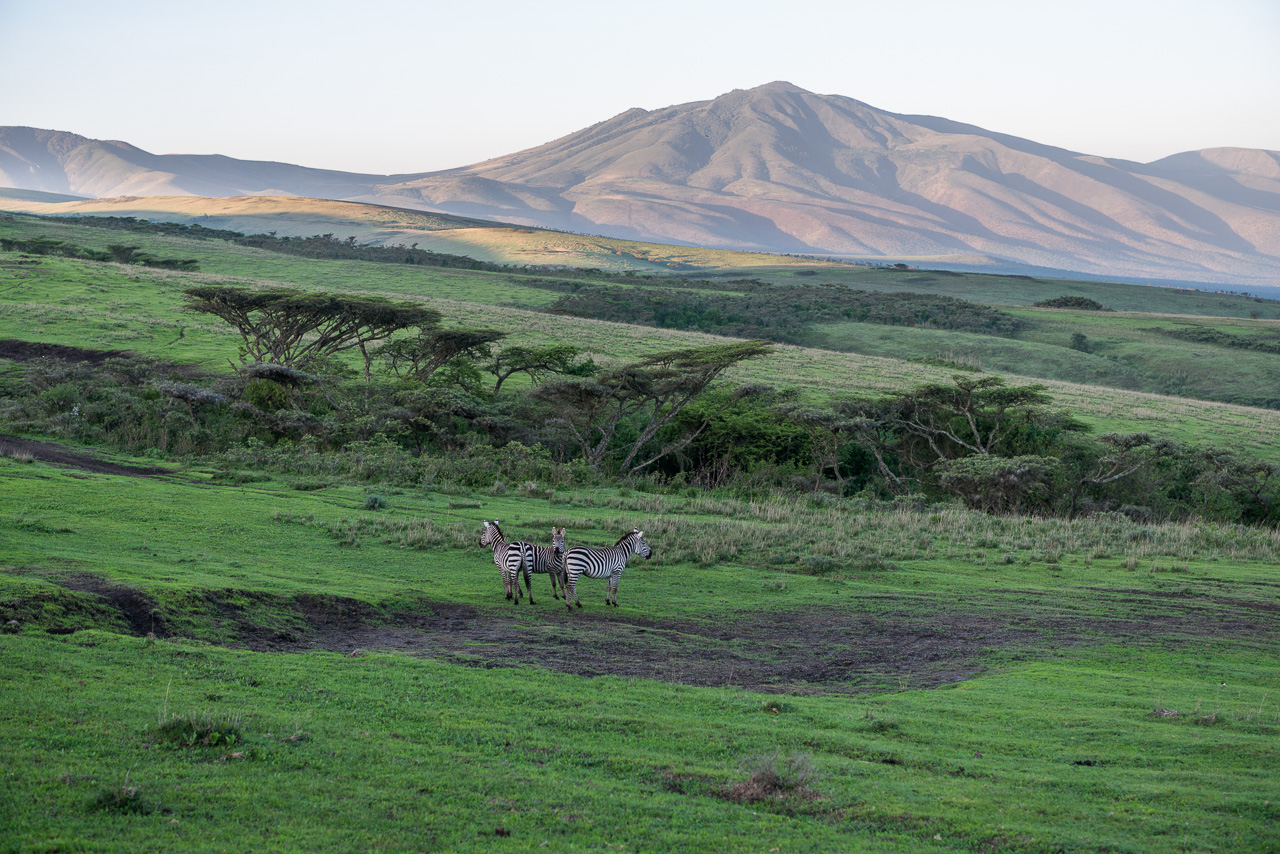
The crater is well known for its high concentration of predators. Powerful lion prides and their archenemy, the hyena, are permanently at home here, and can often be seen snatching prey from each other. With a bit of luck, it’s also possible to spot cheetah and leopard, or even one of the rare rhino. There is a small number of elephant here too, but not a single giraffe in sight, perhaps because the journey to the crater is too difficult for them. With this in mind, it is quite amazing then that several hippos live here! The crater is diverse and forms a closed ecosystem comprising grassy plains, wooded areas (such as the Lerai Forest), various marshlands, natural springs and Lake Magadi at its centre, which supports flamingo and pelican.
The Ngorongoro Crater is a three-hour drive from Arusha. The road leads through the Serengeti via the Karatu Highlands to the rim of the crater. There are three entrances in and out of the crater, which are partly very steep and difficult to access in a vehicle. There are no places to stay within the crater itself, but there are some lodges situated on the rim, the cheapest option, however, is to drive back to the Karatu region. The abundance of wildlife and the crater’s natural beauty attracts a large number of tourists. This can lead to the crater being overrun by vehicles – which means you will be disappointed if you’re looking for a solitary experience. Nevertheless, it is still well worth a visit as it can be quite spectacular during off-peak hours.
It is thought that a huge volcano exploded and collapsed in on itself some two or three million years ago. The massive emission of ash settled in a thick and densely compacted layer over the southern Serengeti, stopping any trees from growing. The undulating grass plains of the Serengeti are a result of the volcanic activity of the Ngorongoro and its neighbouring volcanoes, Olmoti, Empakaai and Ol Doinyo Lengai.
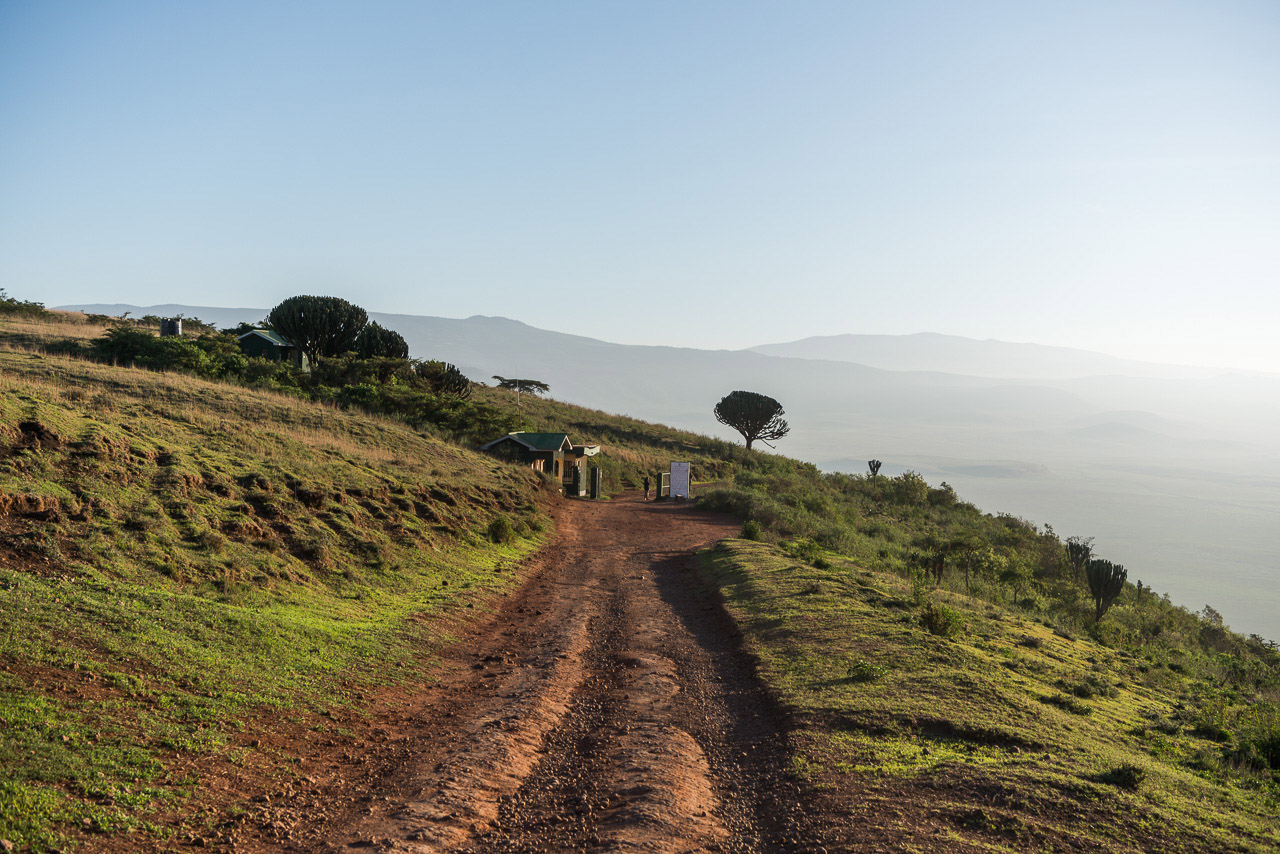
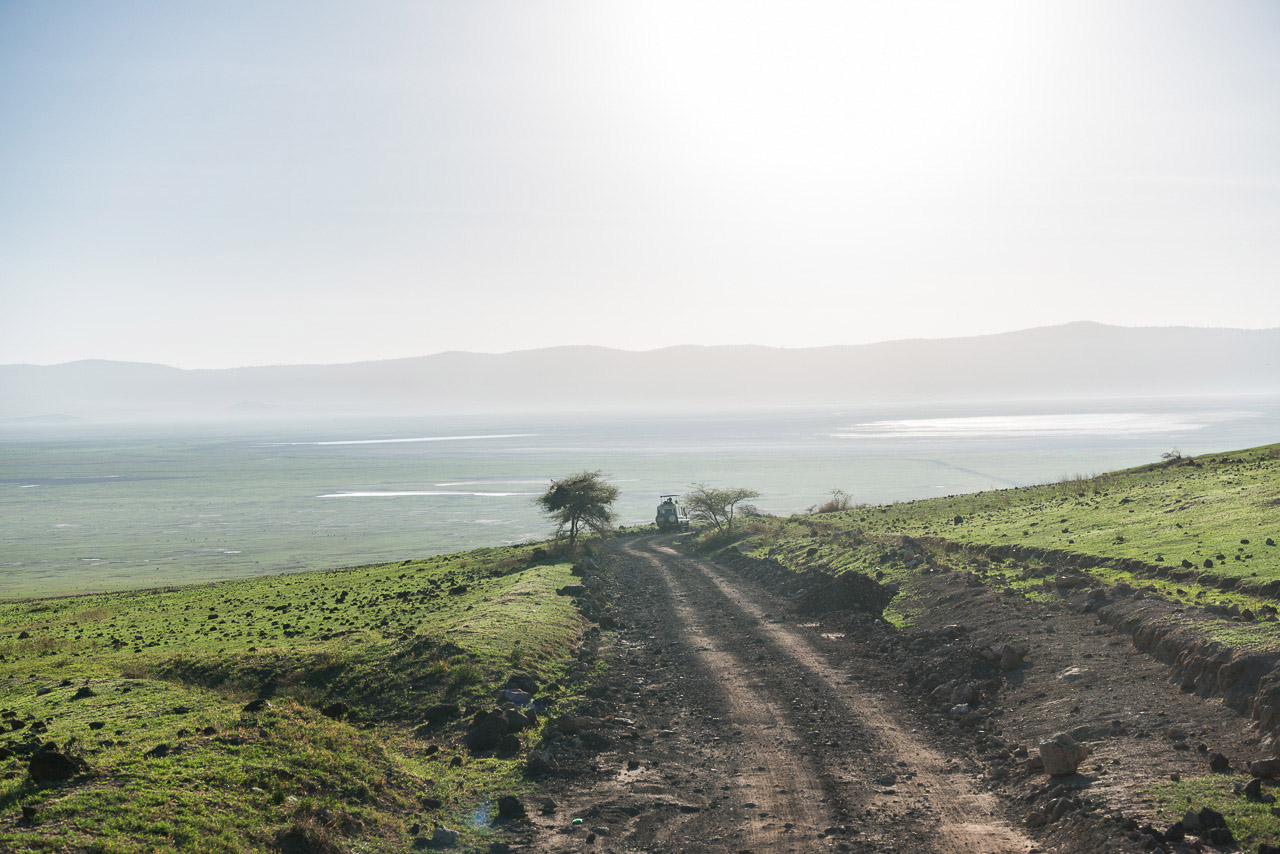
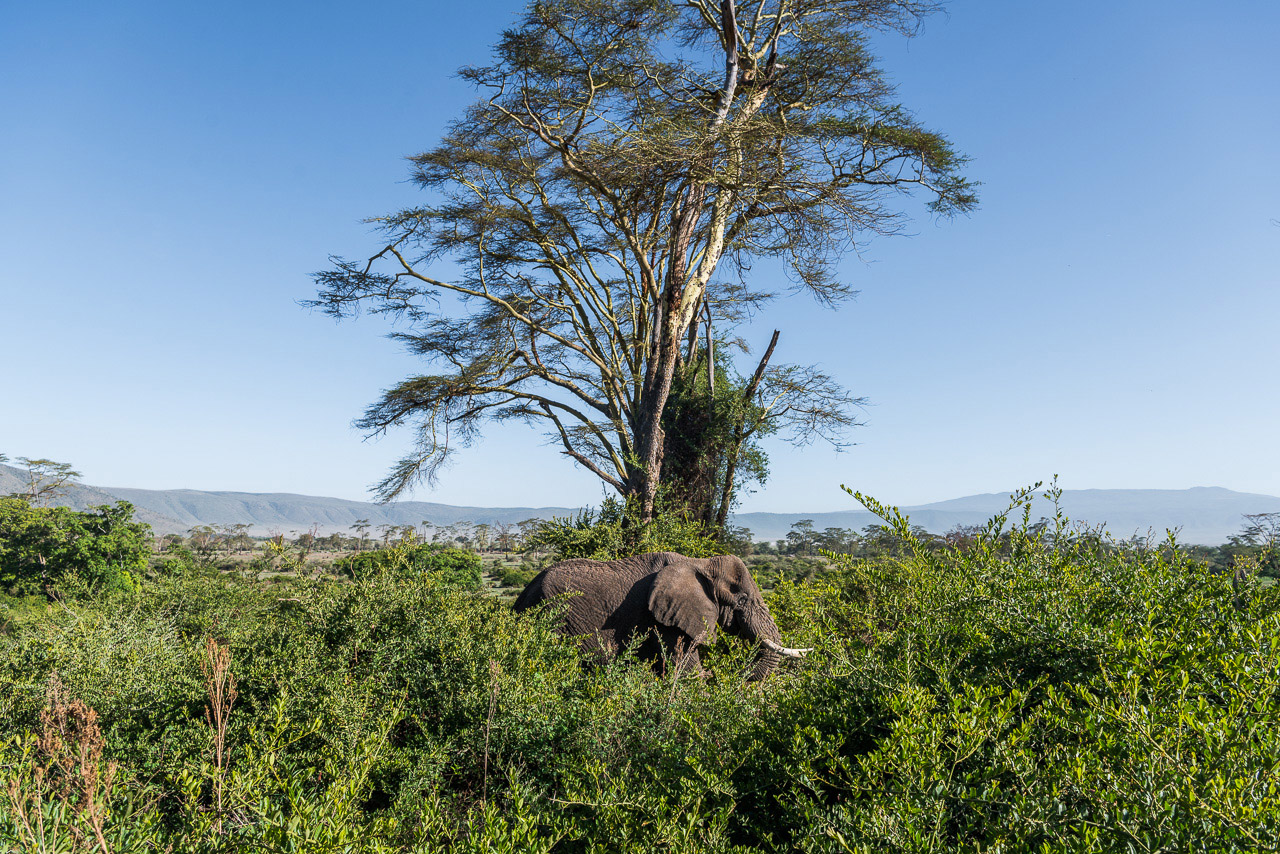
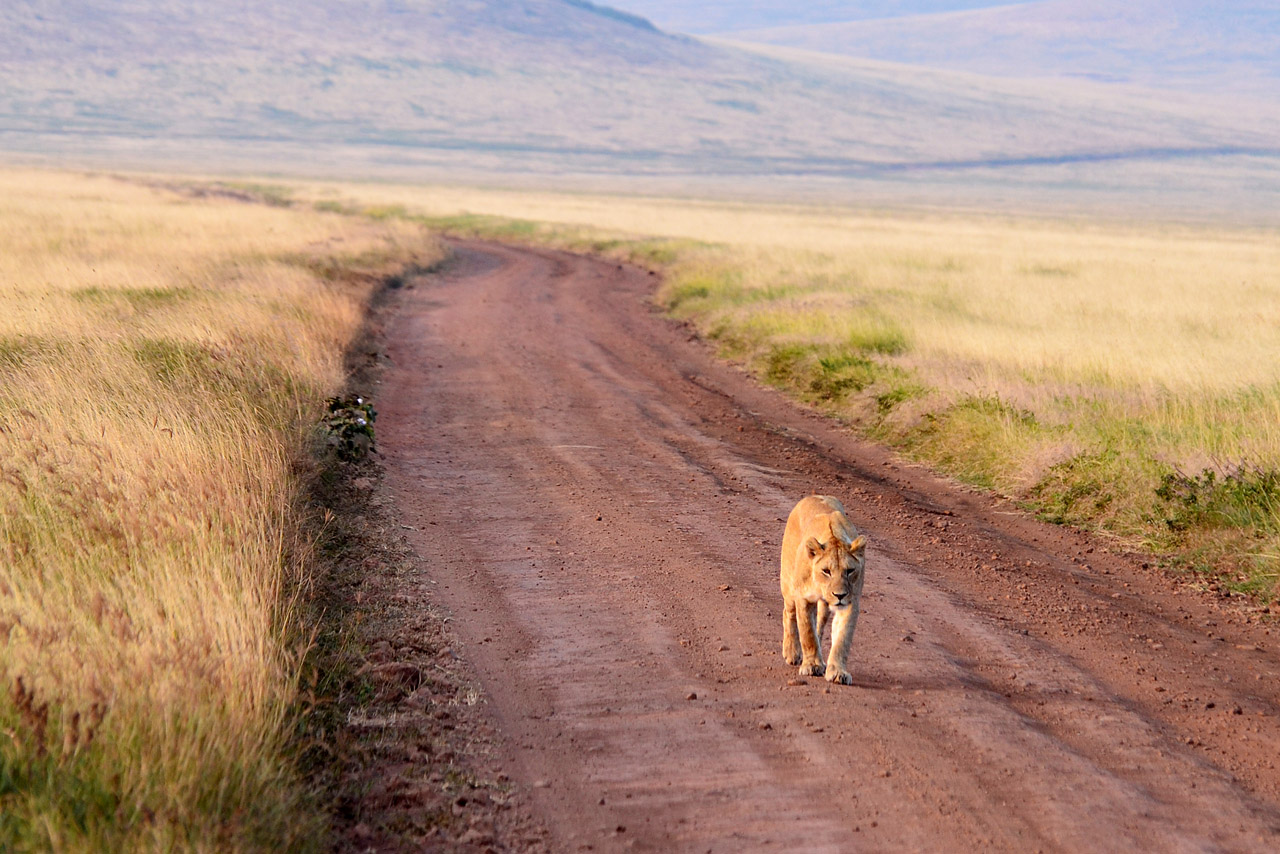

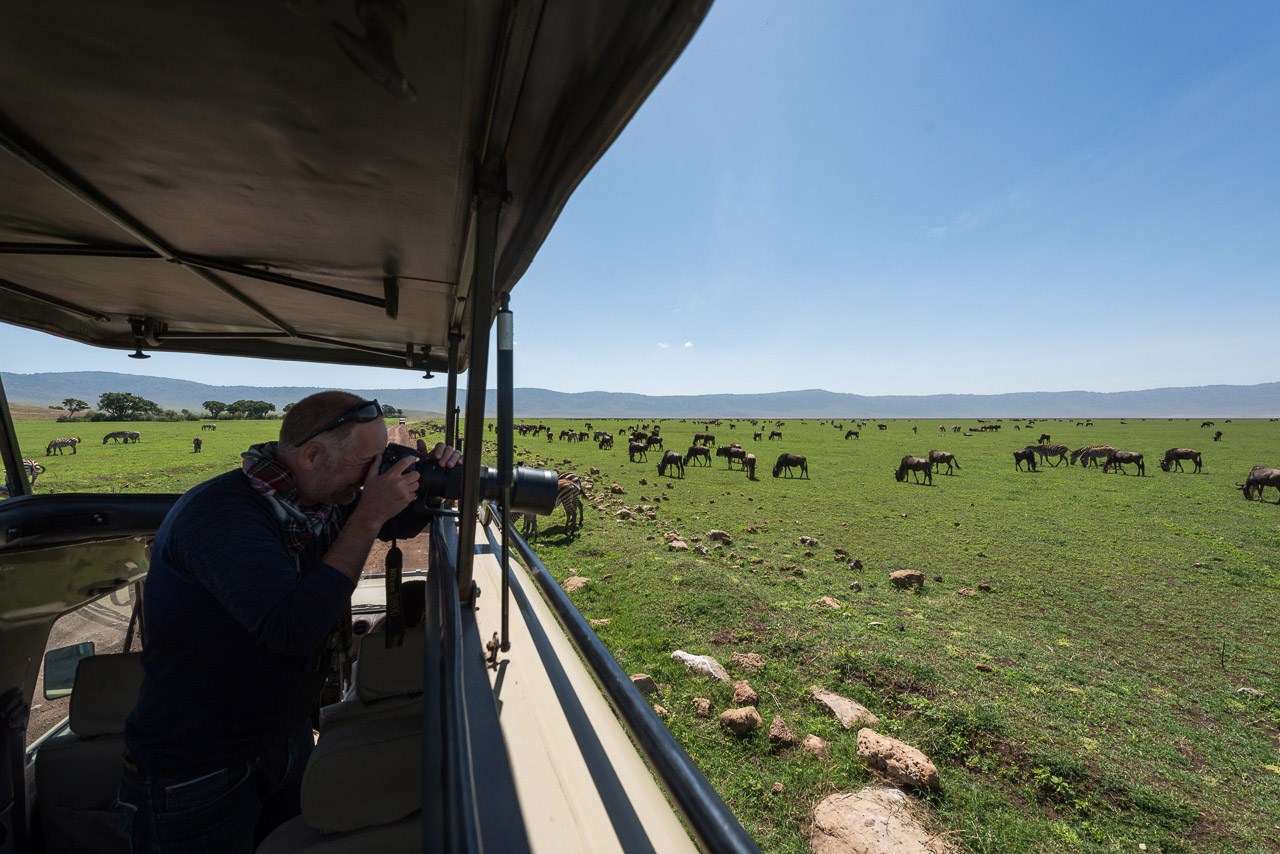
The Ngorongoro Crater is the world's largest inactive, intact, and unfilled volcanic caldera with 19km in diameter and walls 600m high. Its floor covers 260 square kilometres and acts like a natural zoo, providing food for a high resident animal population.
The mineral-rich crater floor is covered with nutritious grass and attracts large herds of animals. Up to 25’000 mammals, primarily herbivores can be found at any one time in the Ngorongoro Crater. The list includes wildebeest, eland, hartebeest, zebra, gazelle, buffalo, rhinos and warthog. Moors and forests provide food for hippo, elephant, baboon, waterbuck and bushbuck. Big cat such as lion, cheetah, leopard and serval find rich pickings here. Large packs of hyena also roam the crater, hunting or pinching the prey of other predators.
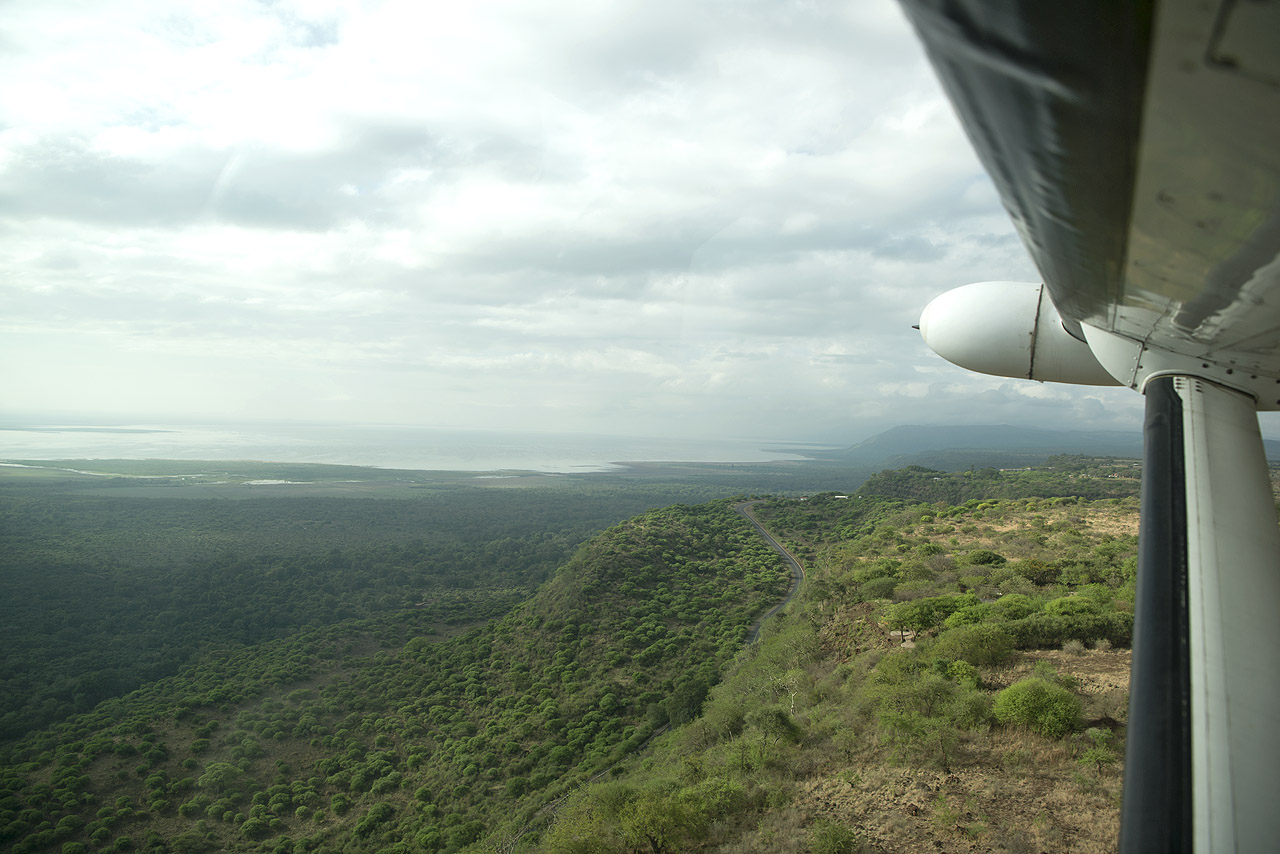

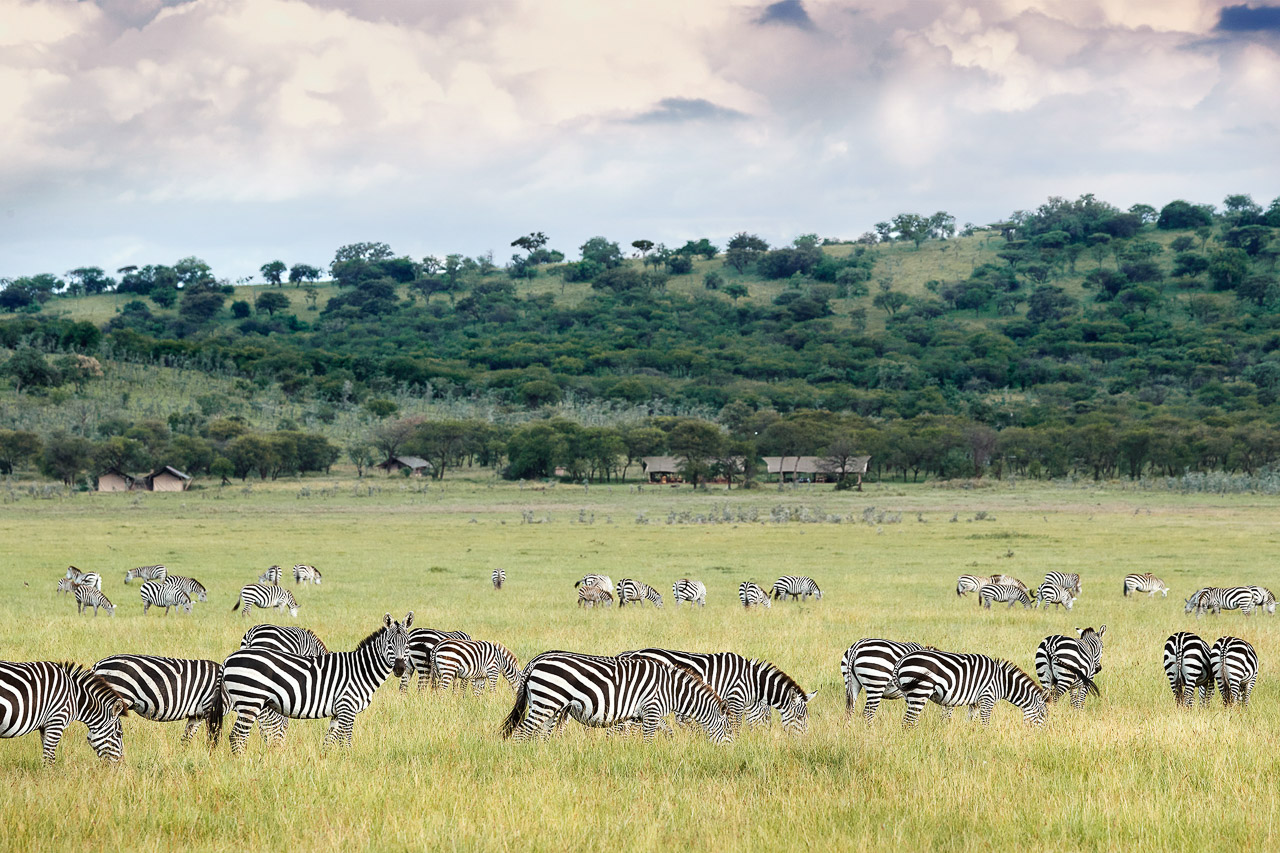
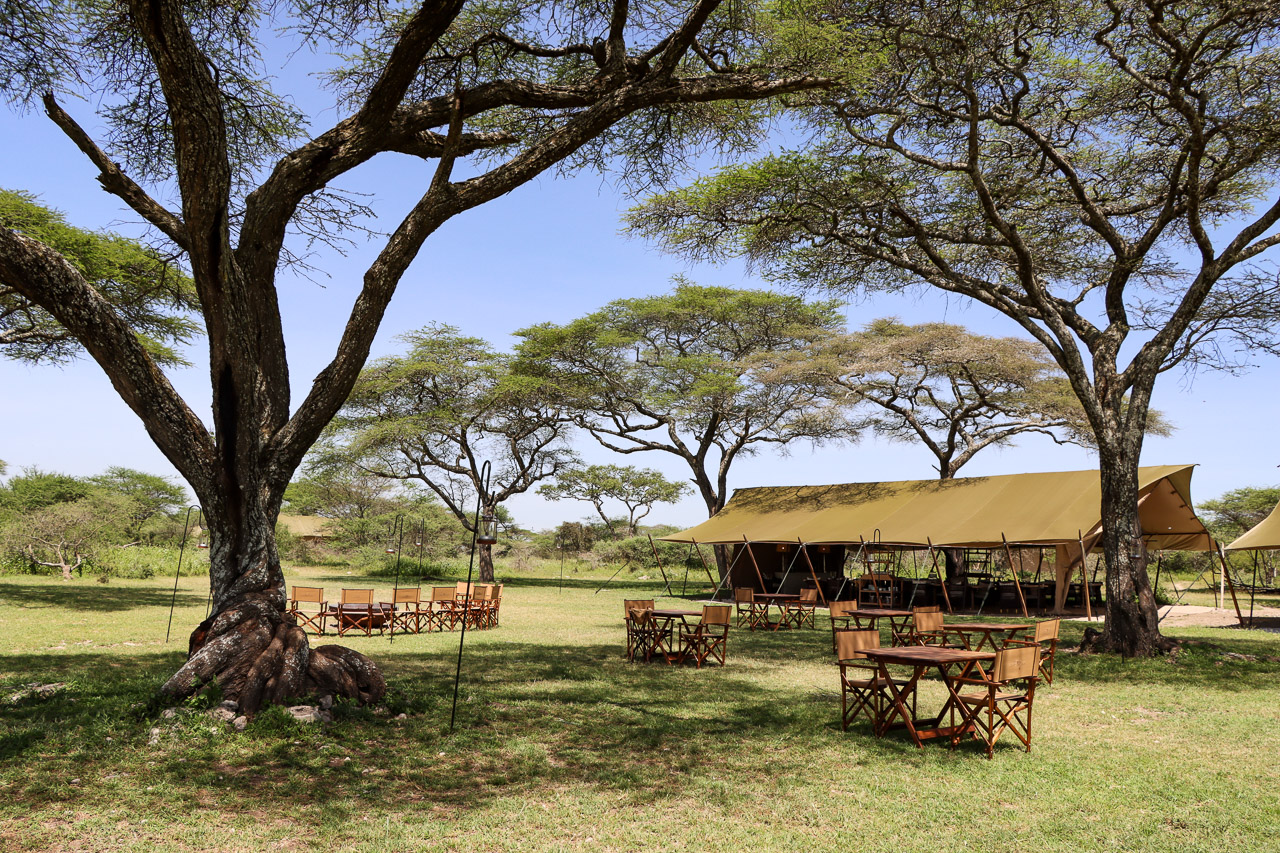
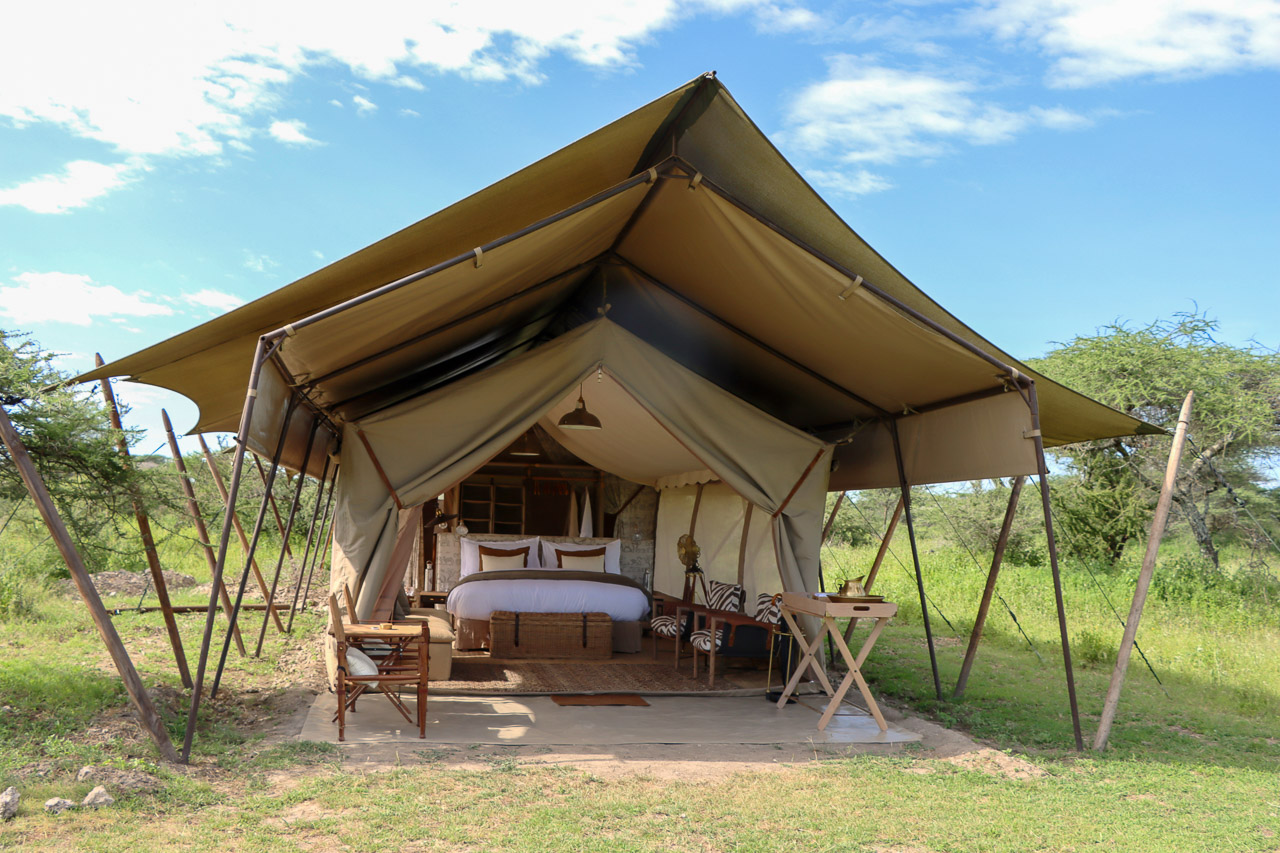
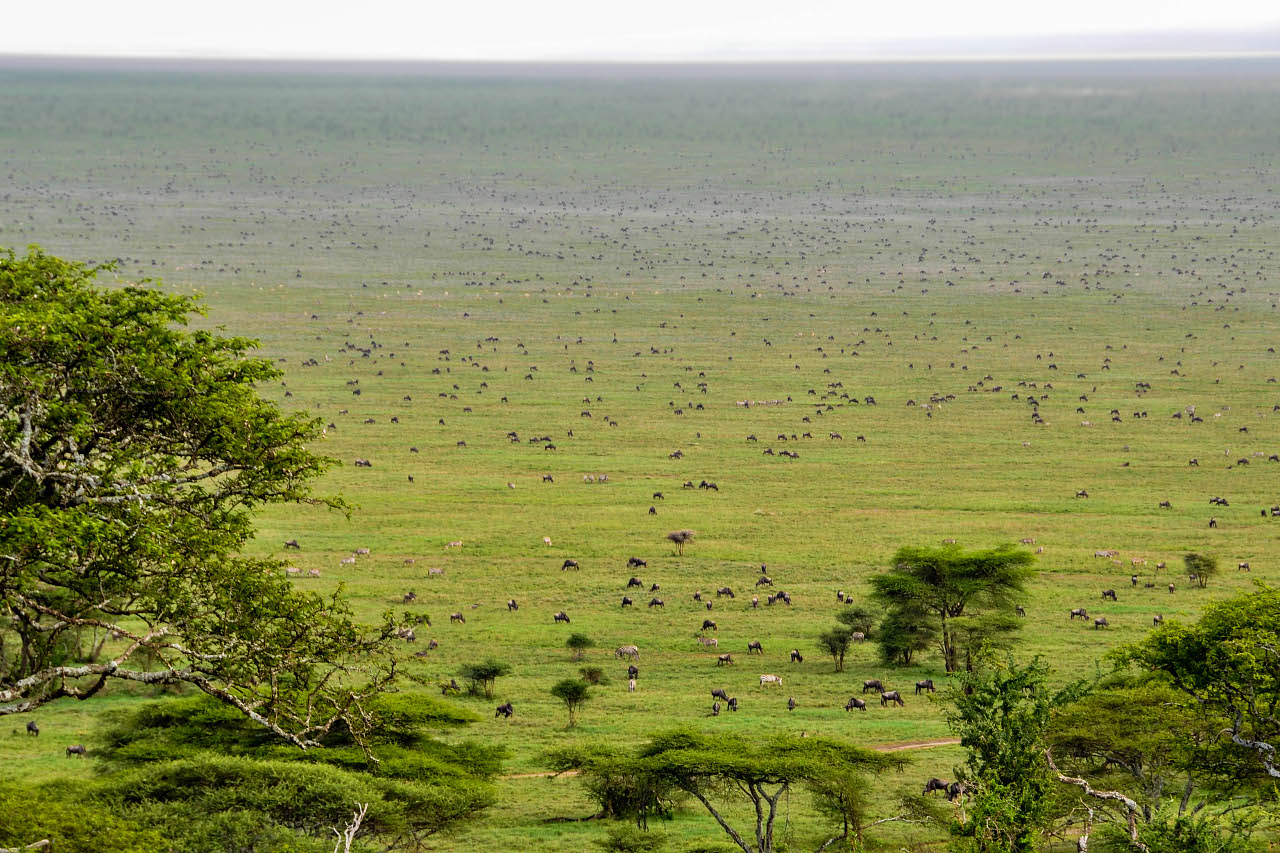
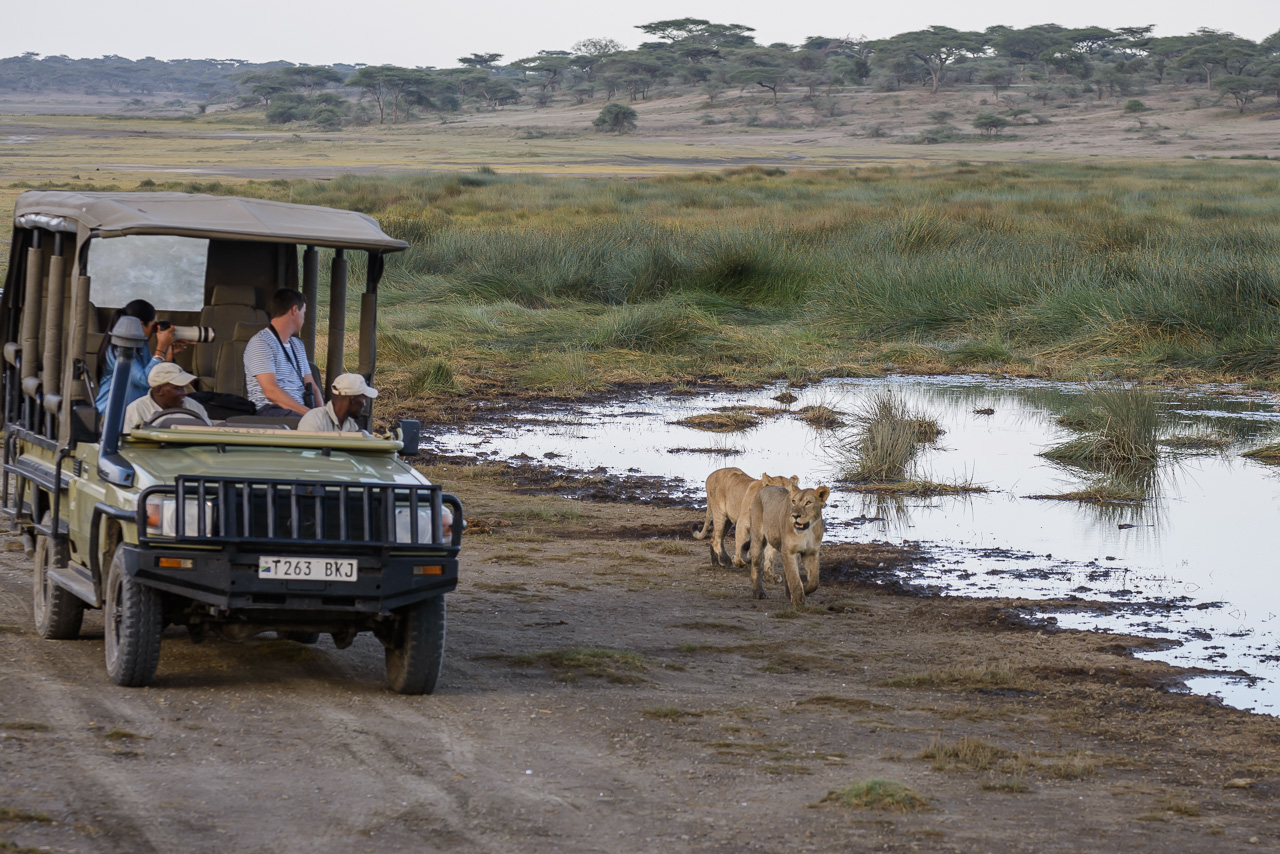
Accommodation Laba Migration Camp is a mobile safari camp with a touch of luxury. The atmosphere is of authentic safari dating back to the end of the 19th century and the décor is based on the theme of ‘a cabinet of curiosities’, which is dedicated to nature. The intimate camp can accommodate up to 22 guests with 8 double and 2 family tents offering versatile arrangements, while two main tents open to nature serve as the lounge, library, bar and dining room.
Laba Migration Camp is dismantled in six days, three times a year, to set down in the main migration zones where the animals are concentrated. From November to March, the camp is found in south of the Serengeti in the Ndutu region, from April to July in Masabi in the Western Serengeti and from August to November in the Northern Serengeti, close to the Mara River crossings.
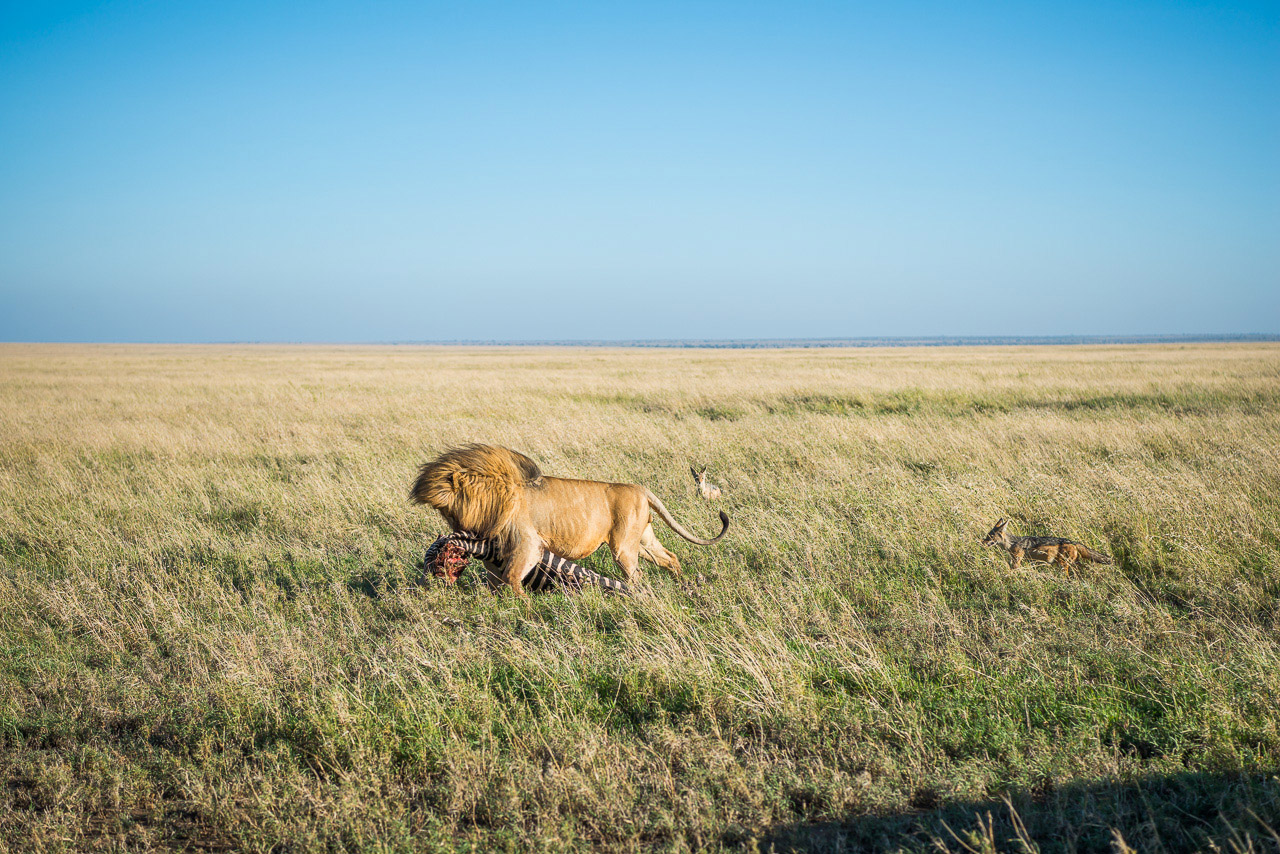
We recall Bernhard Grzimek’s television series and his descriptions of the wildlife paradise that is the Serengeti. The endless grassy plains are deeply impressive and the Serengeti is without doubt one of the most attractive safari destinations in the world.
If you’re in the right place at the right time, it is possible to experience the huge herds of wildebeest (up to two million), with some half-a-million zebra and a couple of hundred thousand Thompson’s gazelle, impala etc… in tow – accompanied by a couple of hungry lion, hyena and cheetah. The spectacle reaches its pinnacle in the north of the Serengeti, when the herds cross the Mara River.
The Serengeti ecosystem includes the actual national park (approx. 15’000 km²) and the bordering protected areas; chief among them is the Maswa Game Reserve in the southwest, the Grumeti and Ikorongo game reserves in the northwest, the Maasai Mara in the north, and Loliondo and the Ngorongoro Conservation Area in the east. The plains in the south comprise for the most part treeless flatlands that stretch out to the horizon. Typically, the plains of the Serengeti are punctuated by tree-covered granite outcrops known as ‘kopjes’, which provide the perfect resting place and observation post for predators. The northern part of the Serengeti is hillier with more vegetation.
The majority of guests travel to the camps that are located in the area where the migrating animals happen to be. If you wish to be alone, then look for a camp where the migration is NOT currently passing through, or combine several camps. There is an abundance of wildlife everywhere, mainly cheetah, hyena, jackal, lion and leopard, which are somewhat more difficult to find. In addition to wildebeest and zebra, there is a good concentration of topi, Grant and Thompson’s gazelle, eland and kudu etc… Elephant and buffalo are also present, but not in great numbers. Rhino also live in the Serengeti, but are naturally very shy creatures and therefore difficult to find.

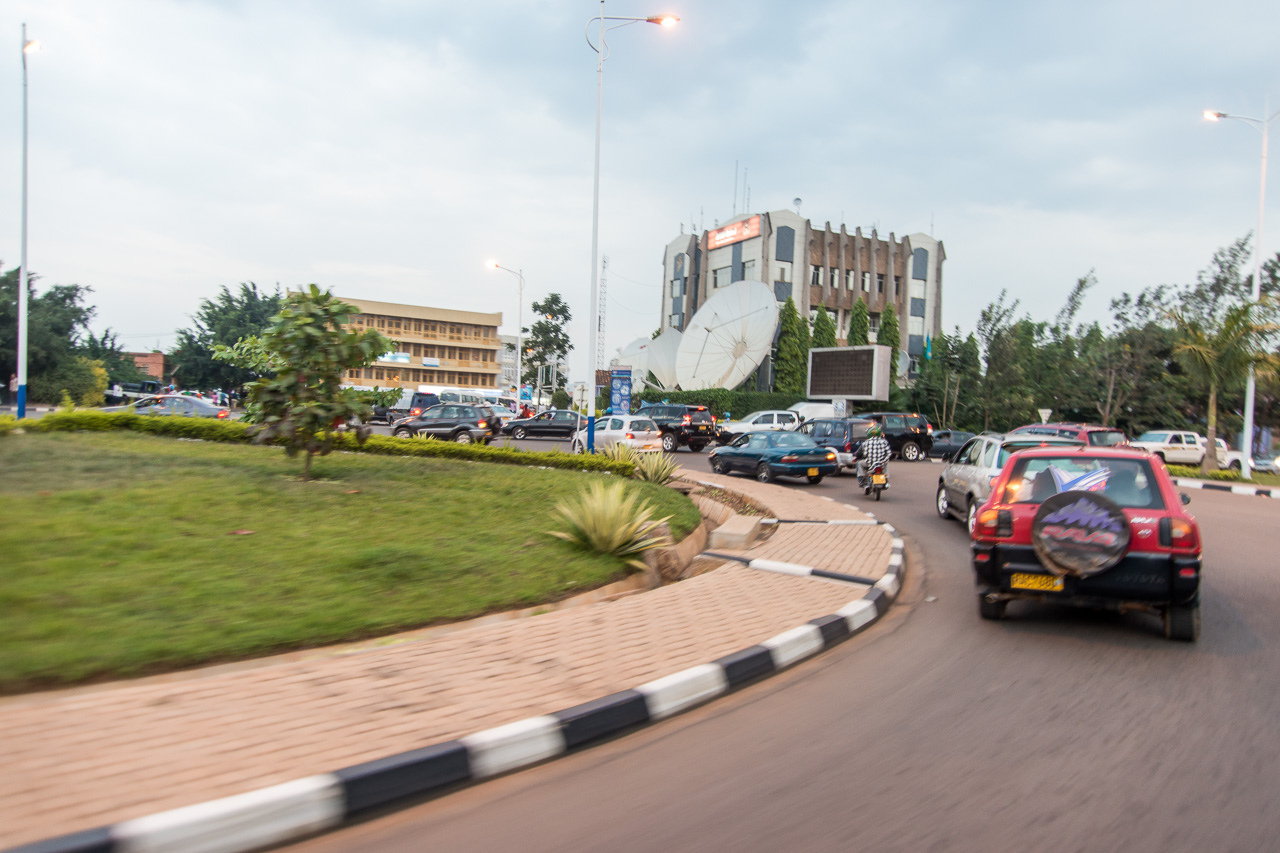

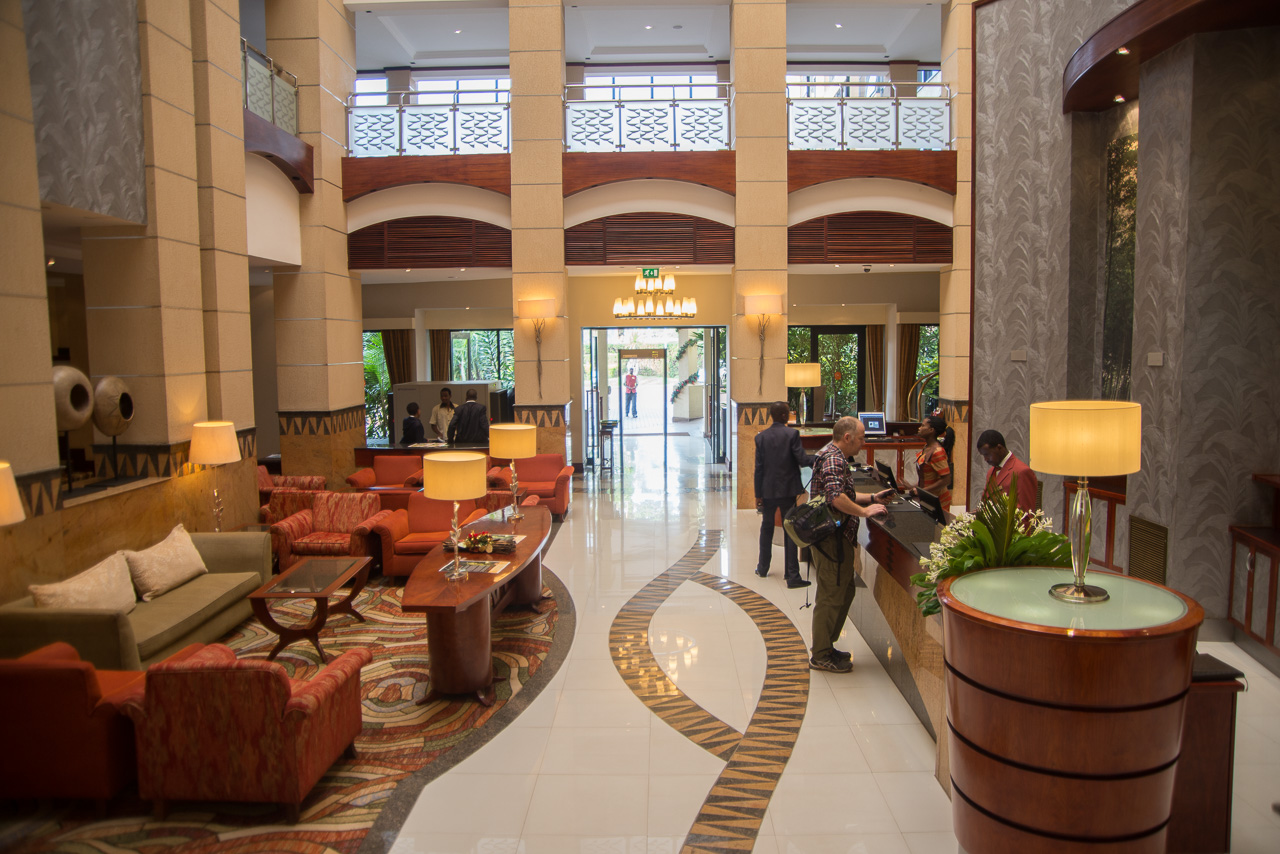
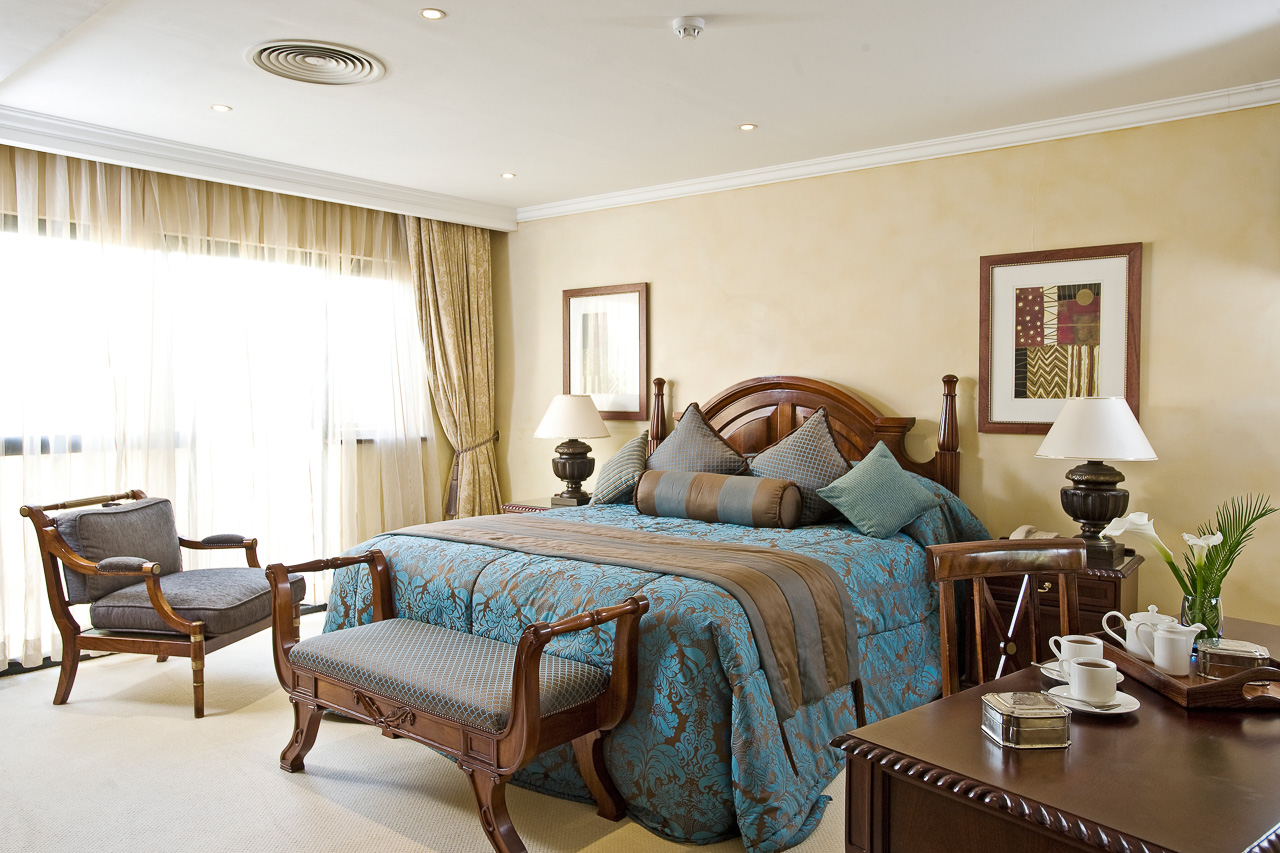
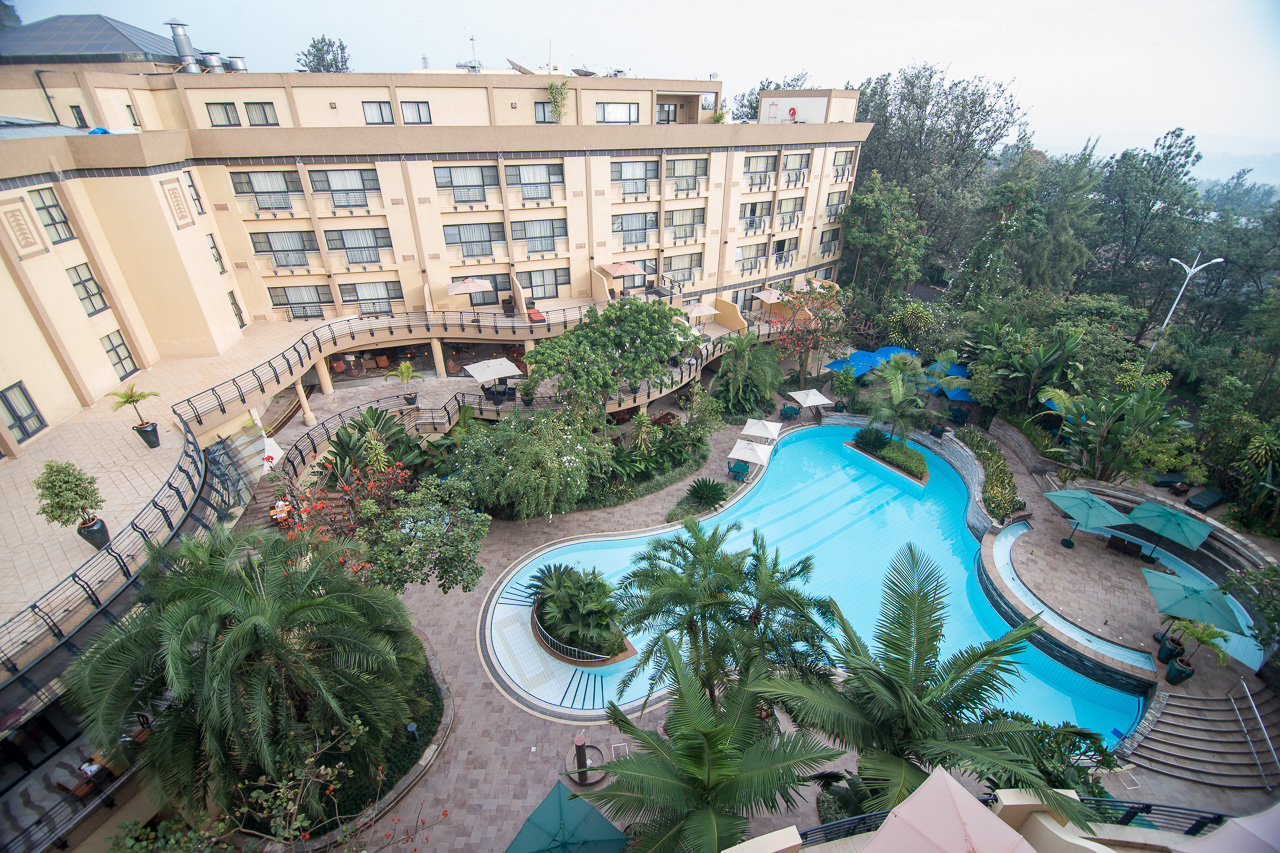
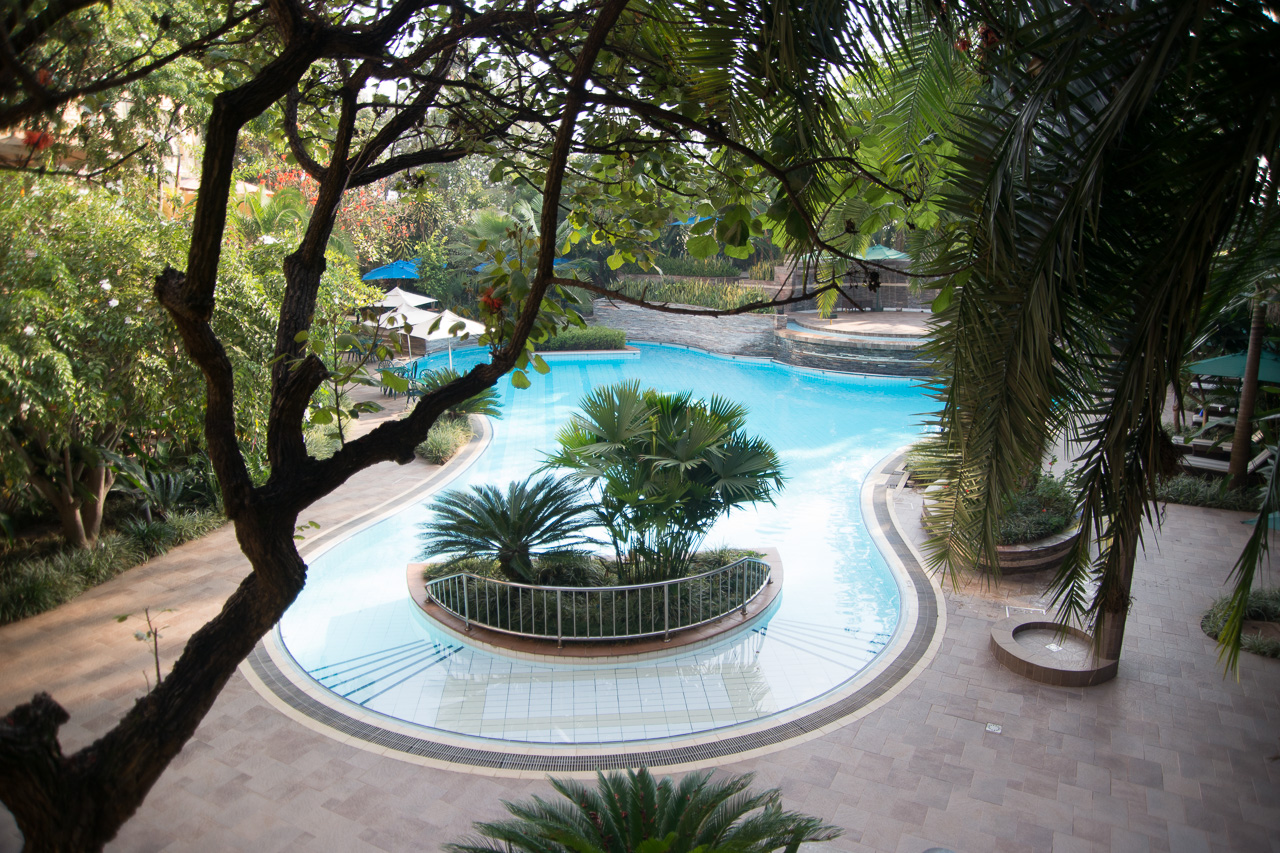
Accommodation
Taken over by the Serena group in 2007, Kigali Serena Hotel is now a modern, contemporary hotel providing a good accommodation option in Kigali.
From standard room to presidential suite, this 150-room hotel offers various categories of accommodation. All rooms come with 24 hr service, air conditioning, WiFi, telephone, minibar, safe, hairdryer and coffee station.
The hotel boasts several in-house restaurants, a large swimming pool, fitness studio and spa.
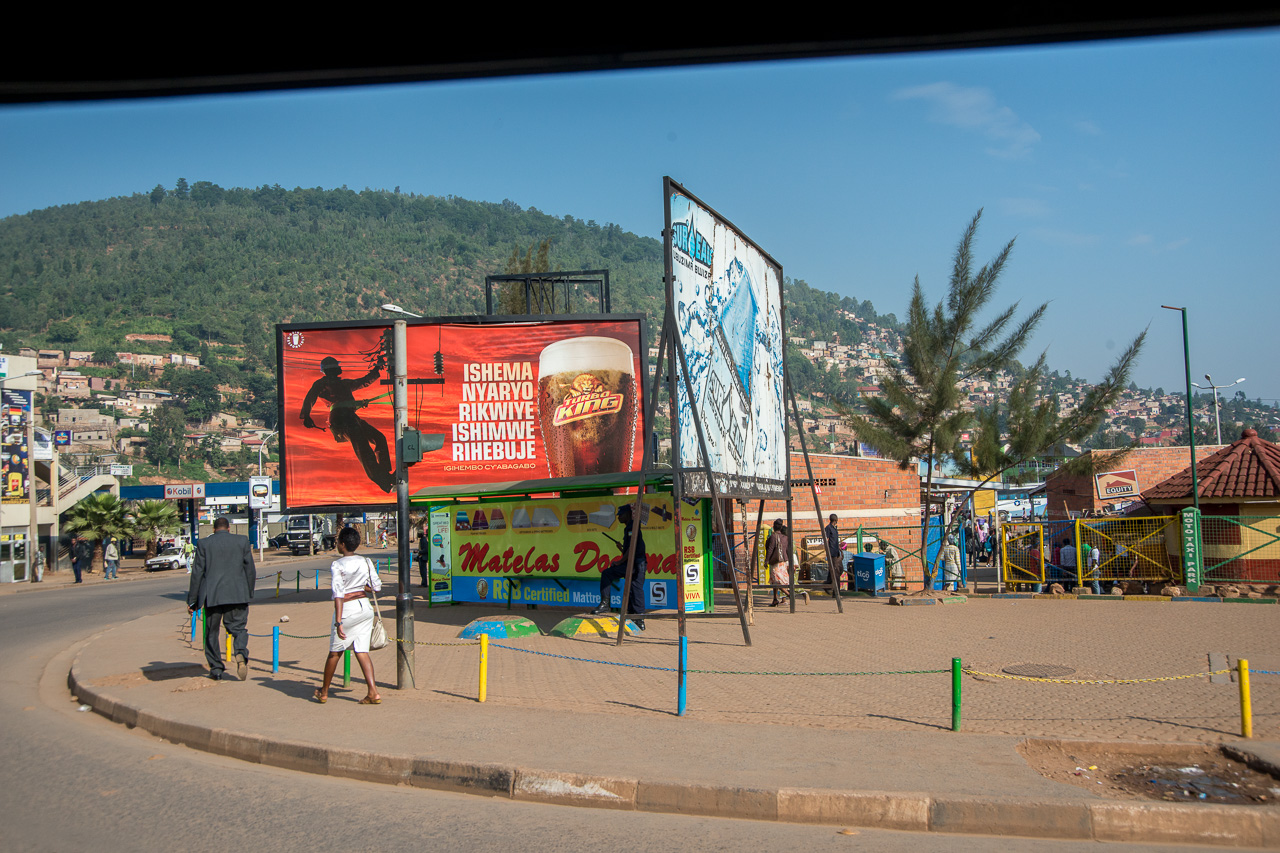
All residents have to clean the city every last Saturday of the month. The police are then controlling Kigali and anyone who is moving around without permit is stopped, handed over a broom and ordered to help cleaning the city. Kigali lies in a region of rolling hills, with a series of valleys and ridges joined by steep slopes, a challenge for both pedestrians and traffic.
Kigali is clean, safe and most visitors spend the first night of their trip in Kigali.
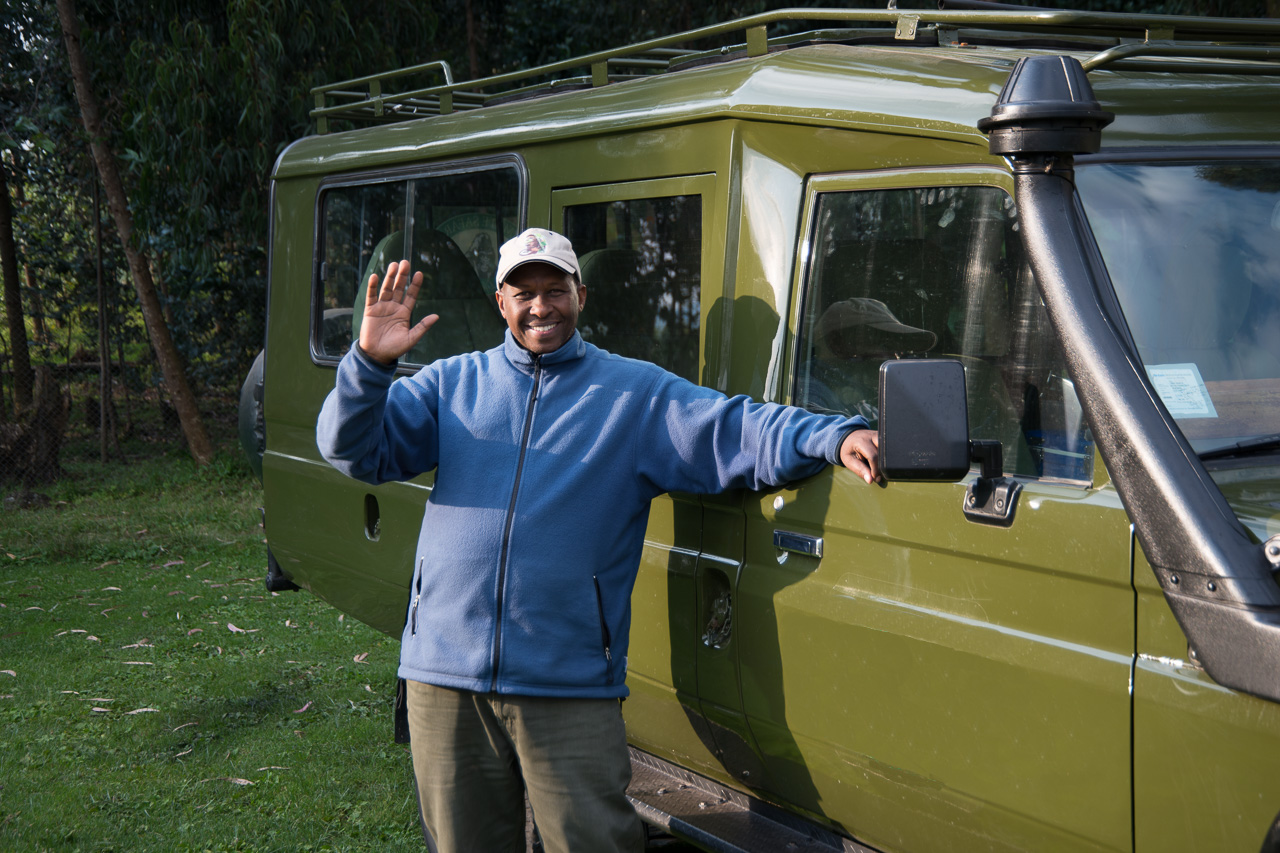
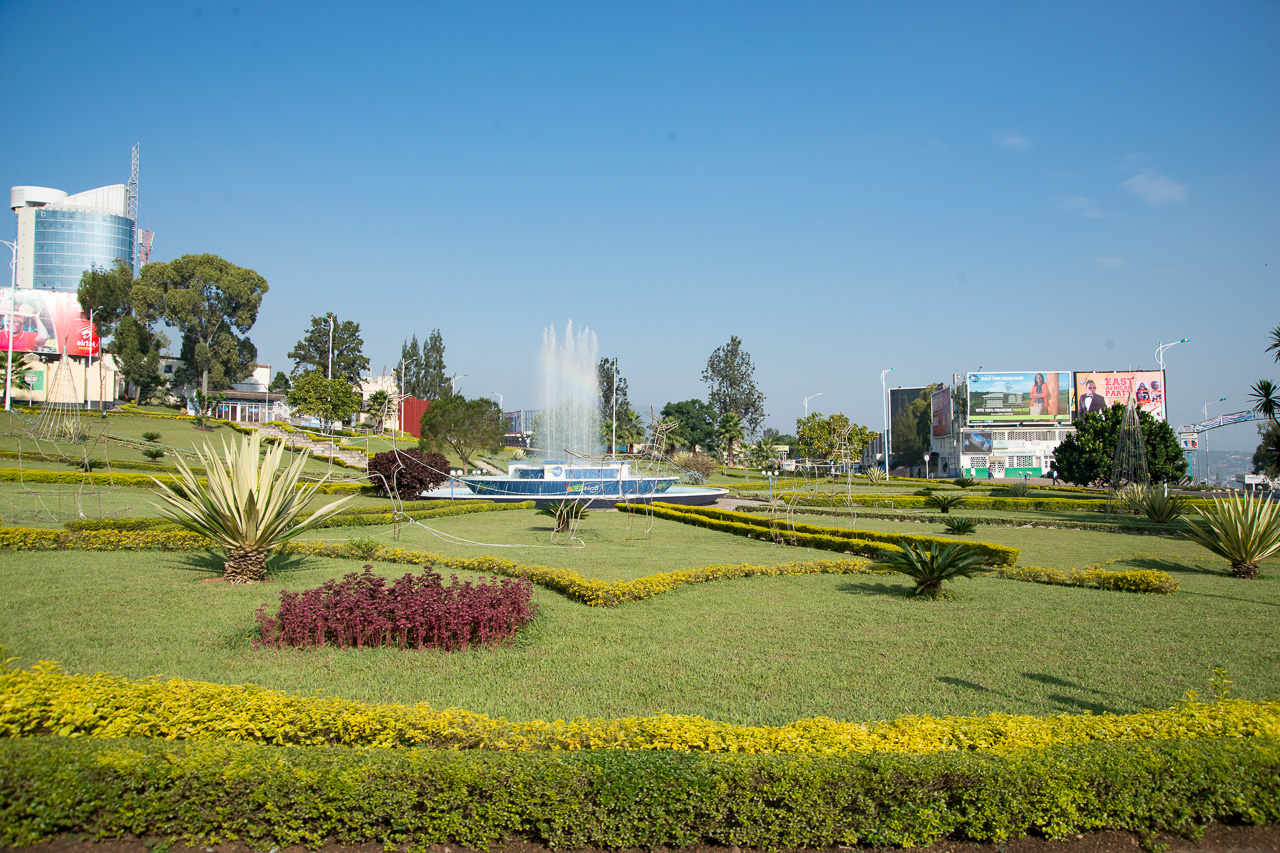

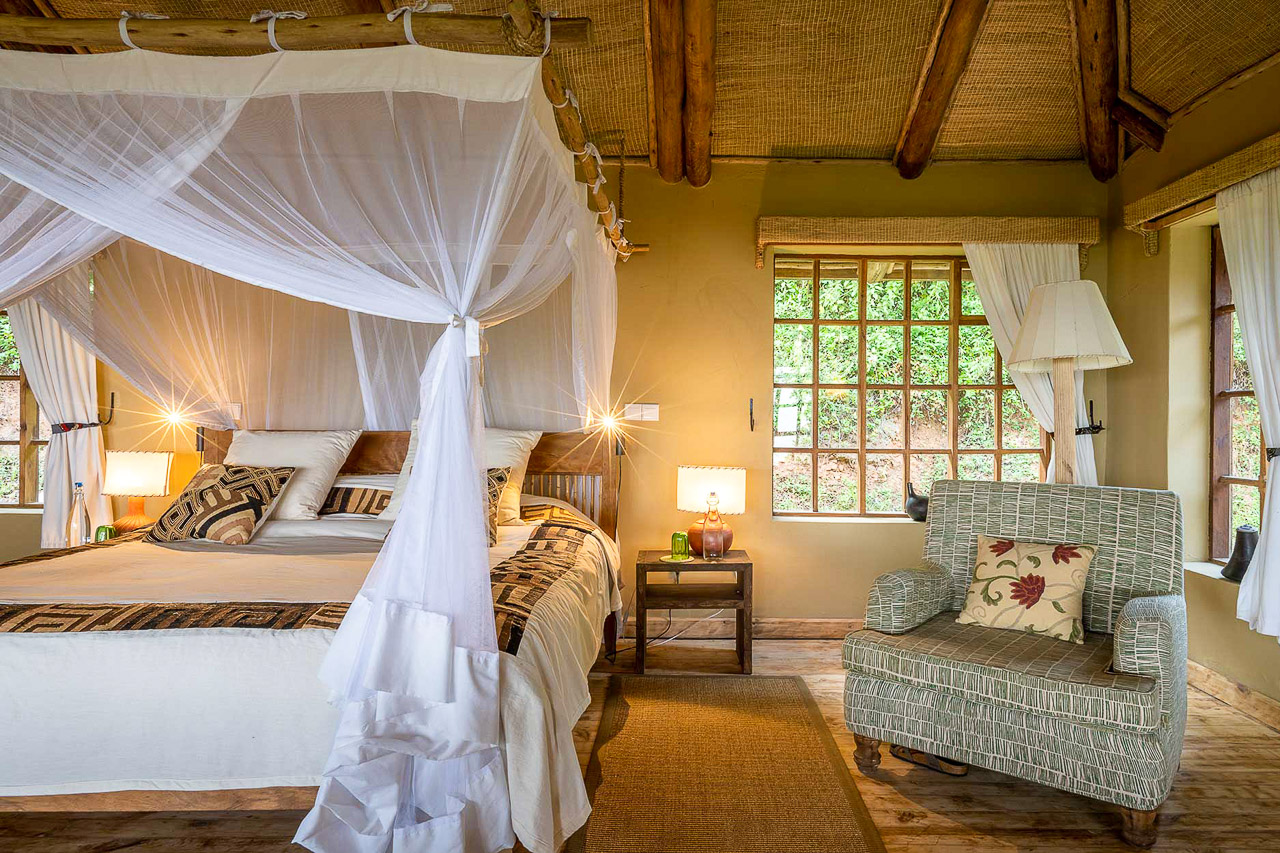
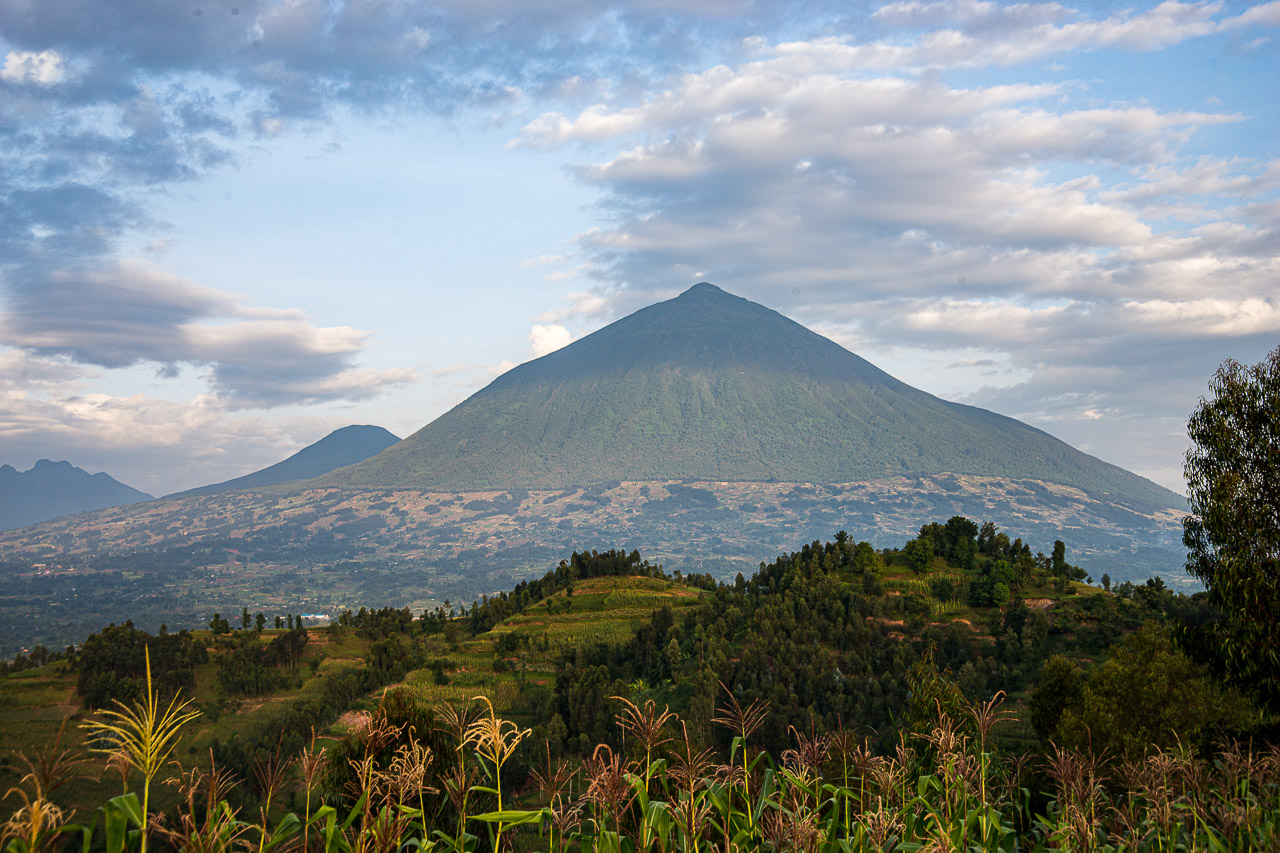
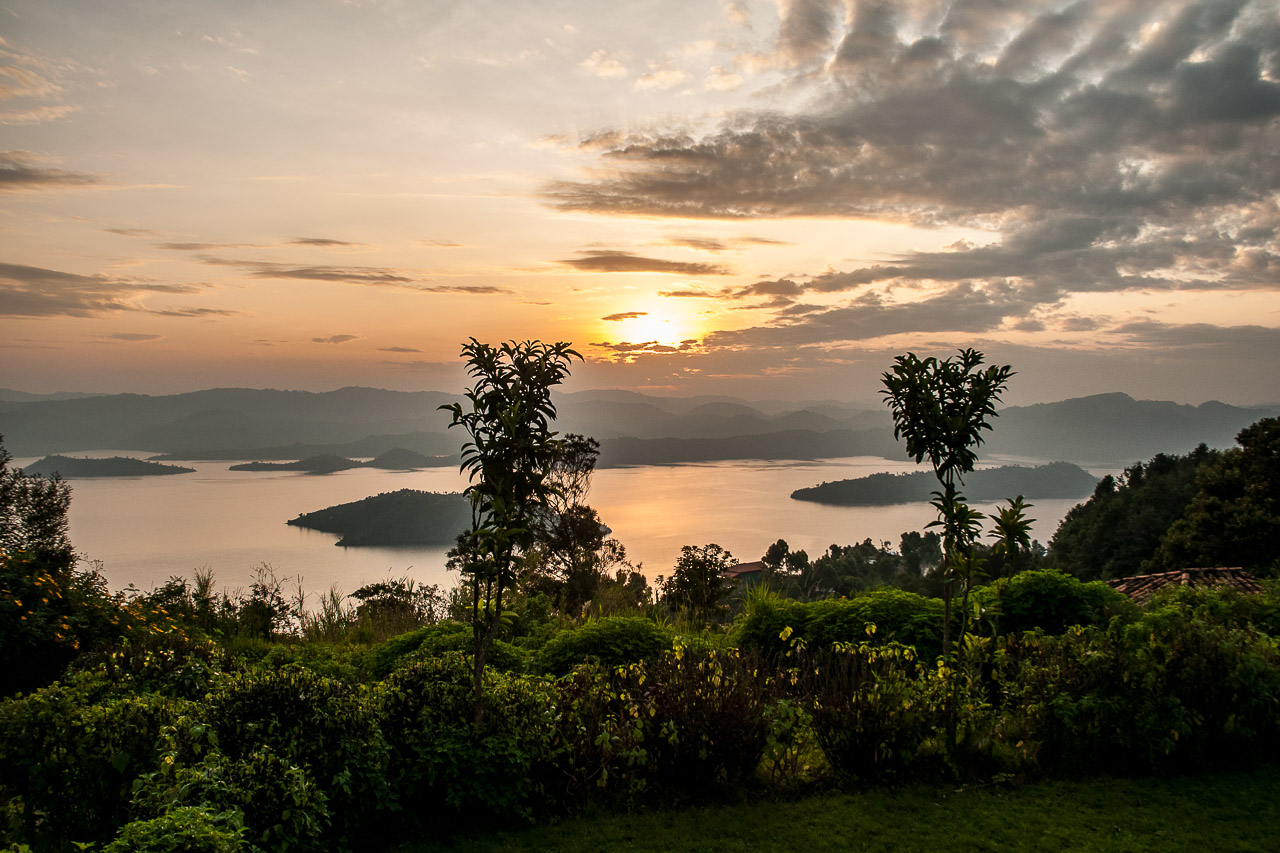
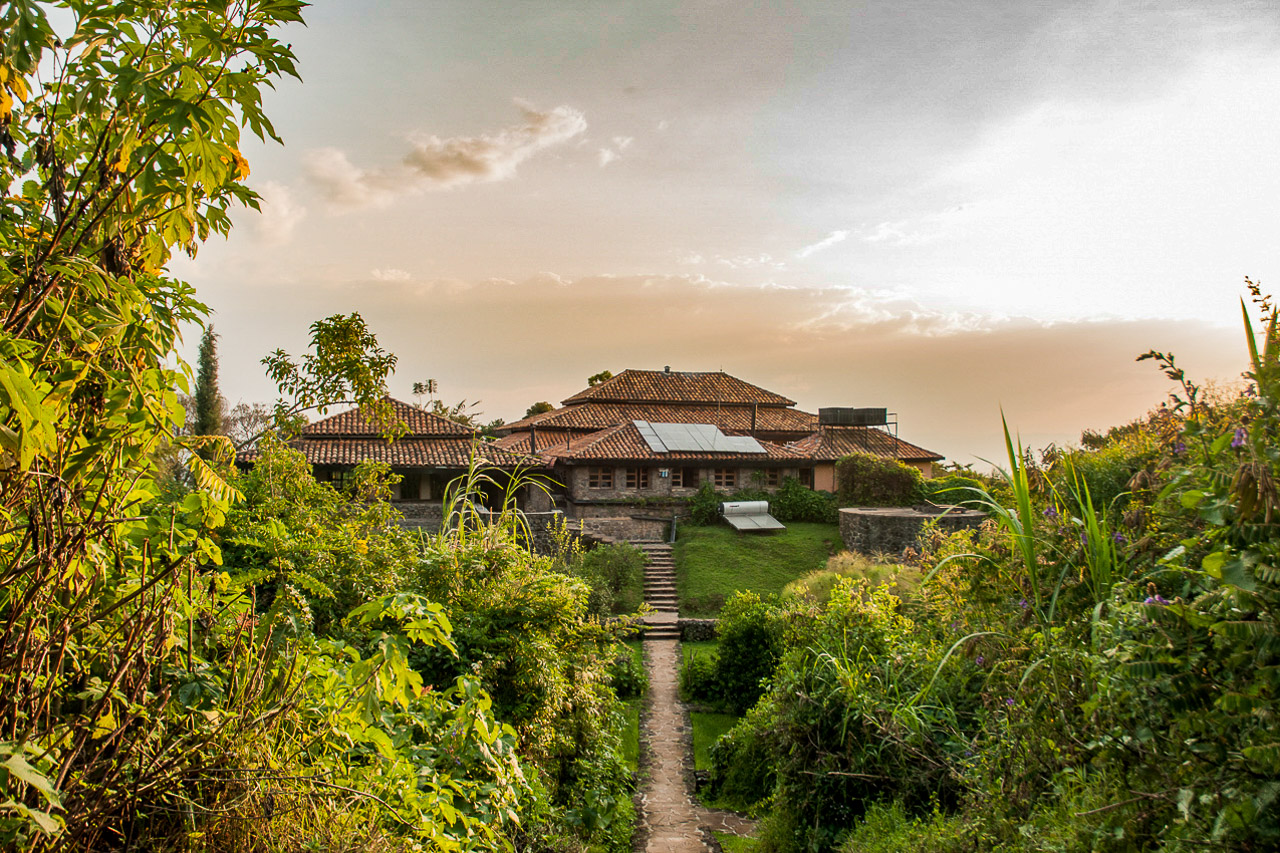
Accommodation
Virunga Safari Lodge is built on a 2'300 m high mountain with a terrace that offers breathtaking views of the Virunga volcanoes and the Ruhondo and Bulera lakes. The lodge comprises eight large standard bandas with stylishly furnished rooms and two deluxe bandas with with stone fireplaces, open living room and private terrace.
The central lounge is the lodge's social hub, where guests meet for dinner and exchange stories by the crackling fireside; further entertainment is provided by a local dance troupe. This eco-lodge has been built with local natural materials and runs on solar electricity.
Virunga Safari Lodge is situated on a spectacular slope overlooking the Ruhondo and Bulera lakes. The drive to the national park's headquarters takes about an hour; Kigali is located about 3,5 hours drive away.
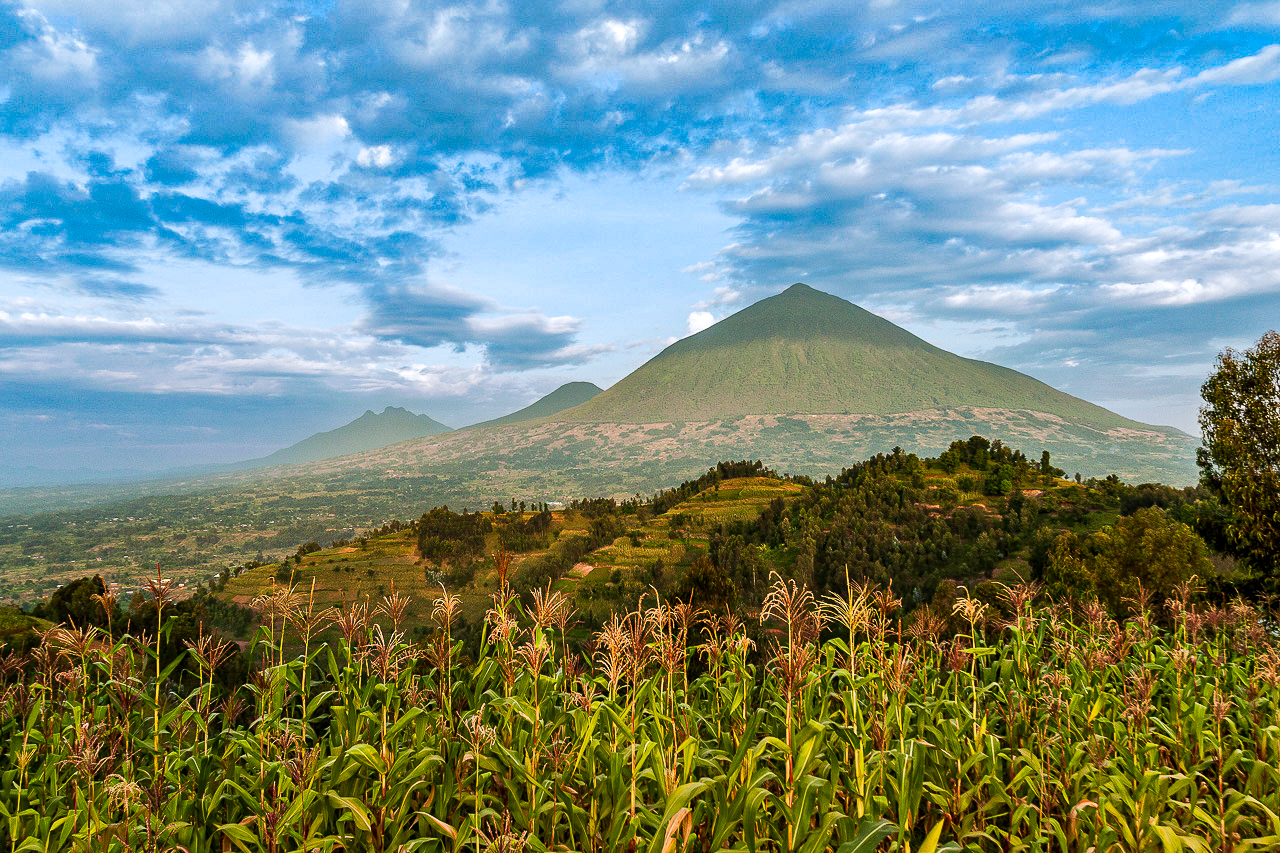
The Virunga Volcano Region (VVR) is ecologically a single entity, but politically divided into three national parks: Mgahinga Gorilla National Park in Uganda, Volcanoes National Park in Rwanda, and Virunga National Park in the Democratic Republic of Congo. Another gorilla population lives in the Bwindi Impenetrable National Park (BINP) in Uganda in an area of about 330km².
Five extinct volcanoes named Karisimbi, Bisoke, Sabyinyo, Gahinga and Muhavura form an impressive backdrop and the border to the Democratic Republic of Congo. Mikeno is also visible in the very far distance, a volcanoe that is located entirely in the Democratic Republic of Congo.
The mountain gorillas (Gorilla beringei beringei) live in stable groups led by a dominant silverback. Unfortunately, the gorillas are threatened. Your visit of these magnificent animals helps generate urgently needed funds for the protection of the gorillas. Today, more than 1,000 mountain gorillas can still be found in these countries and the numbers are increasing again.
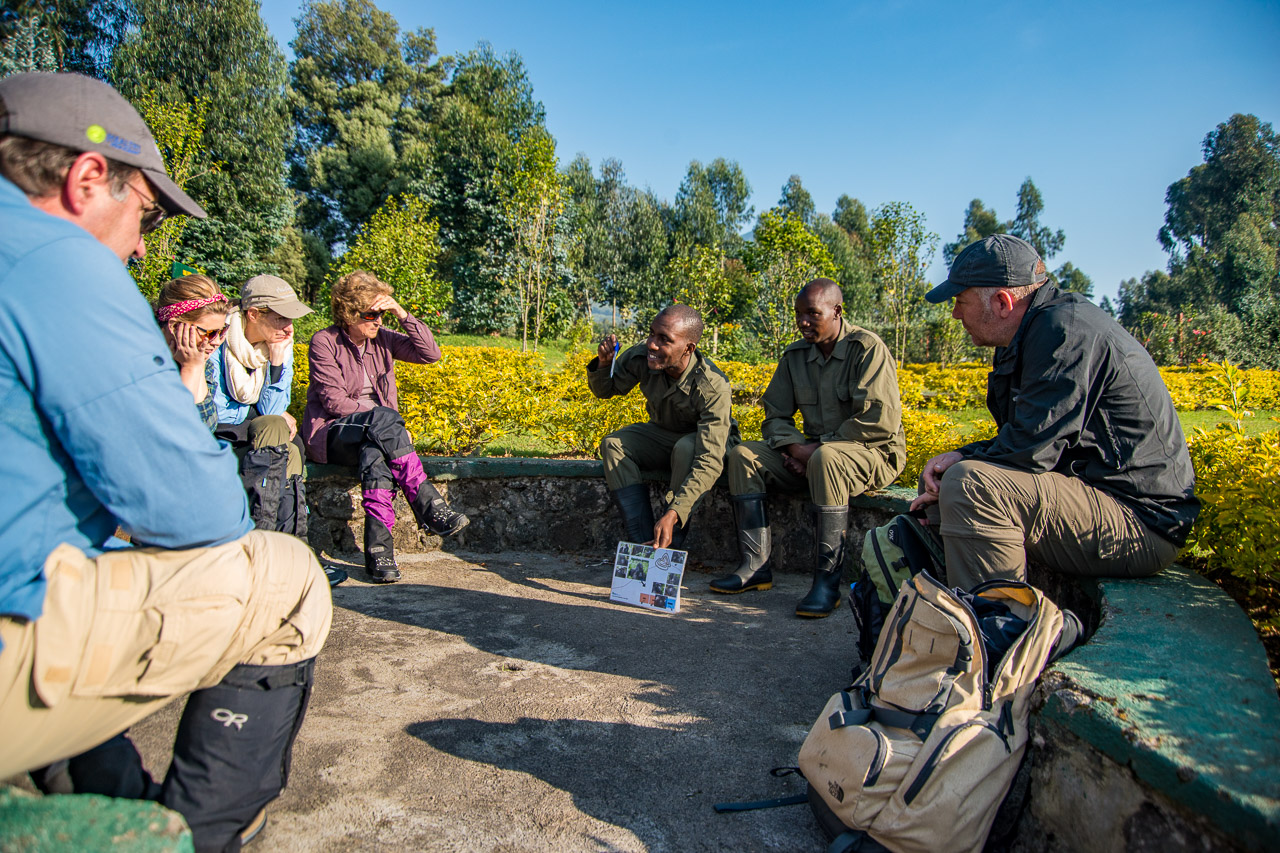
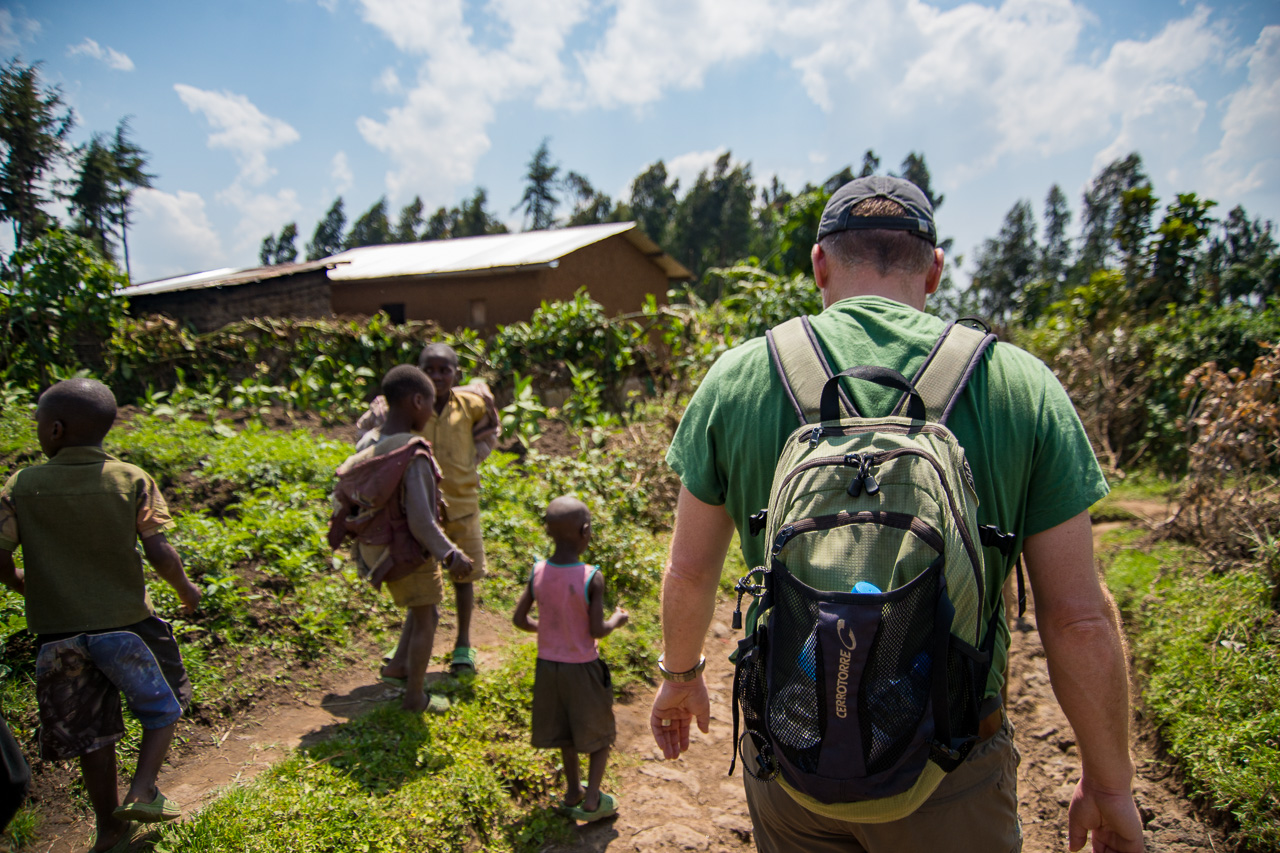
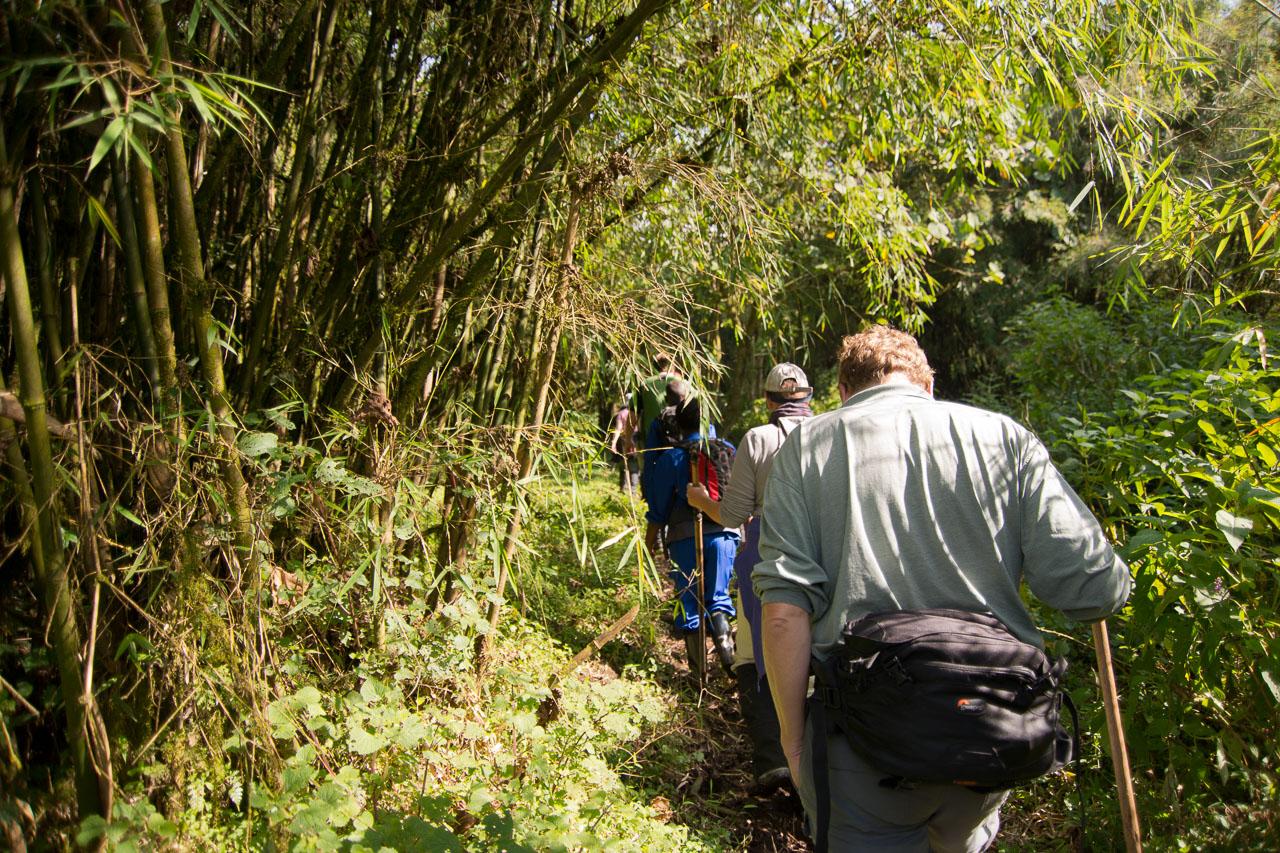
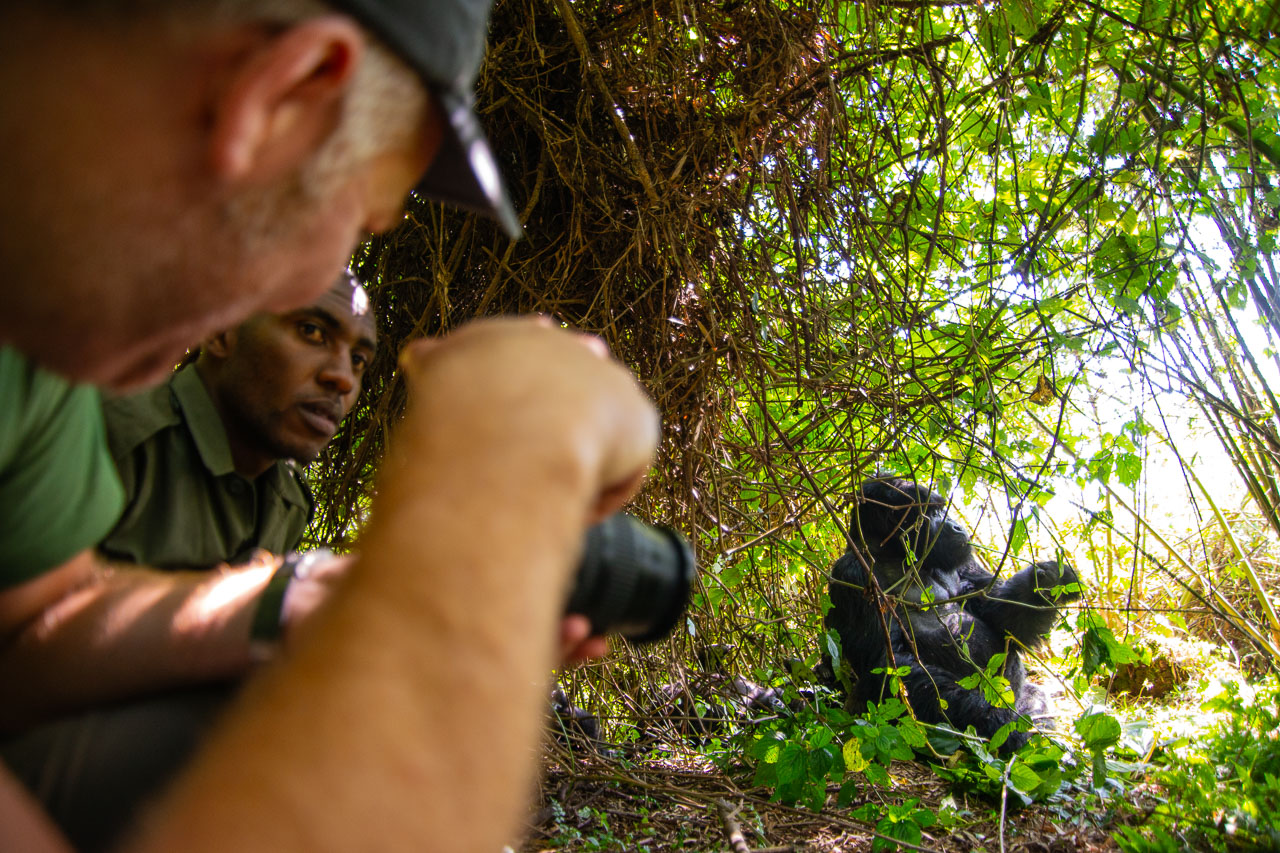
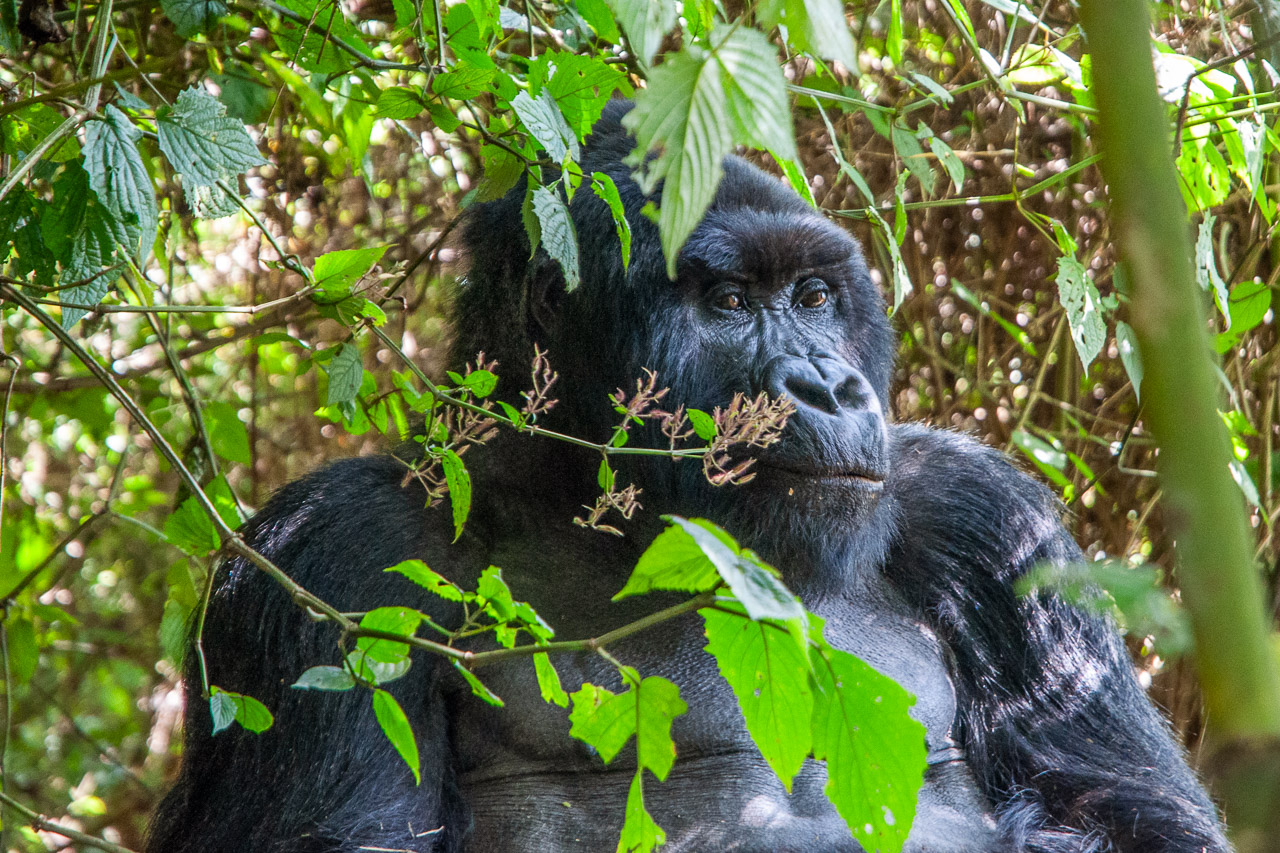
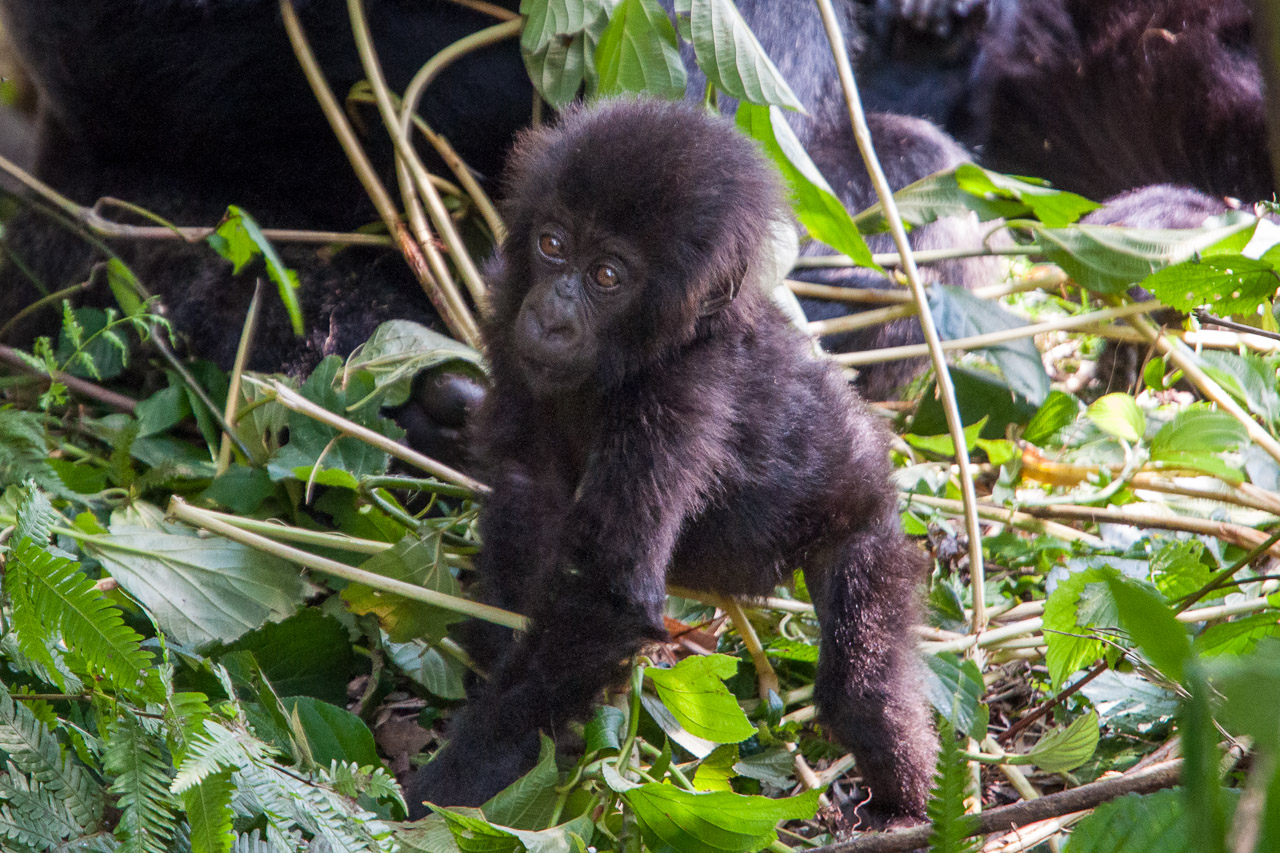
The trekking takes anything from two hours to seven hours, depending on the location of the gorilla group. Please note that the duration of stay with the gorillas is strictly limited to one hour. The gorillas are often very curious towards guests, especially the teenagers in the group like to investigate.
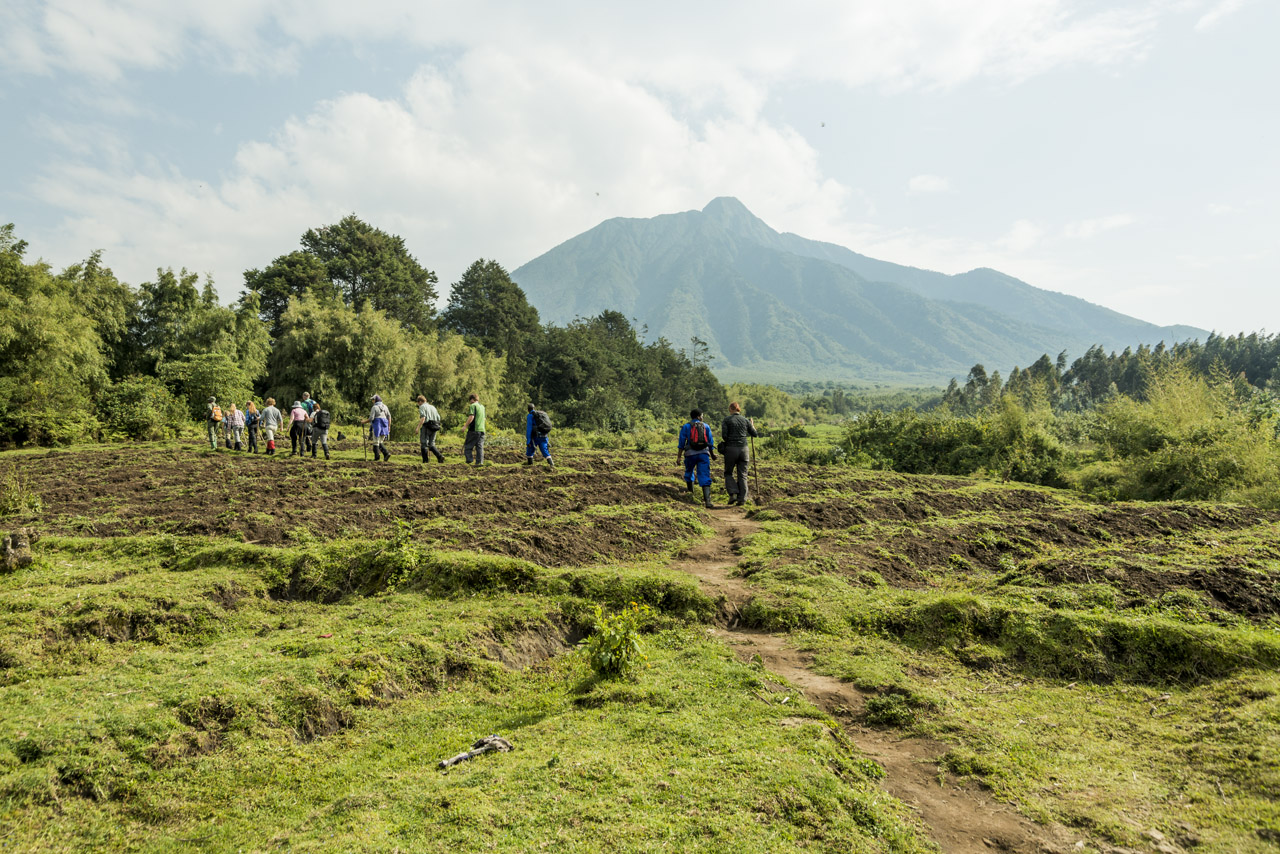
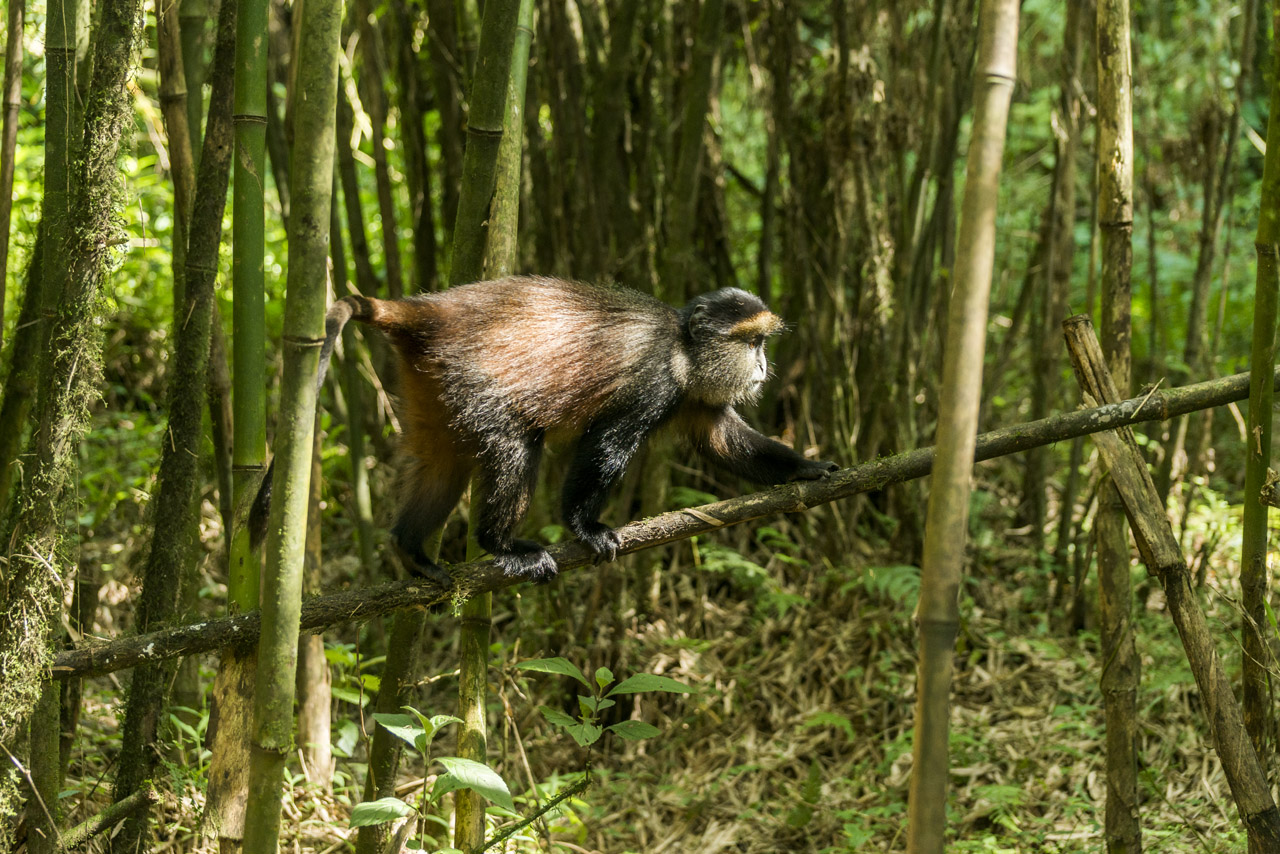
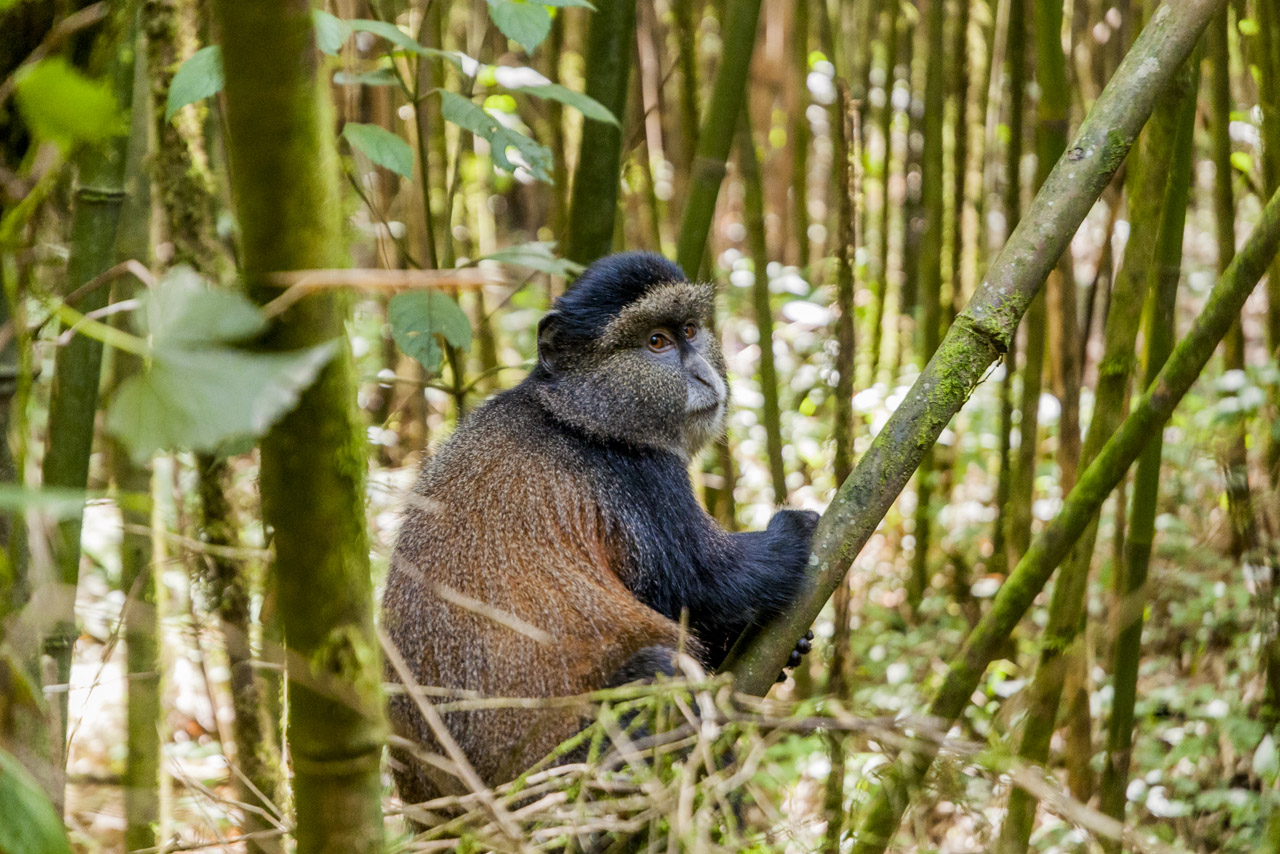
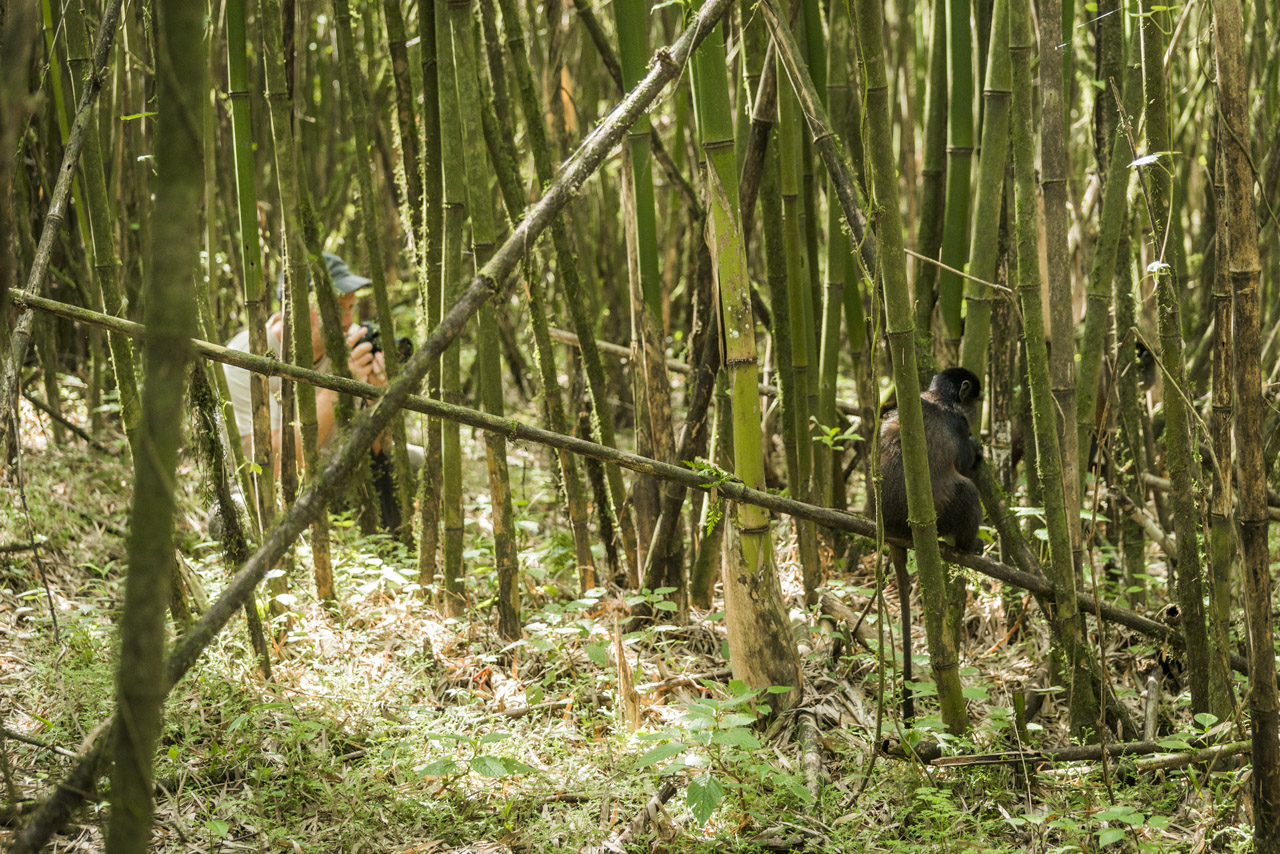
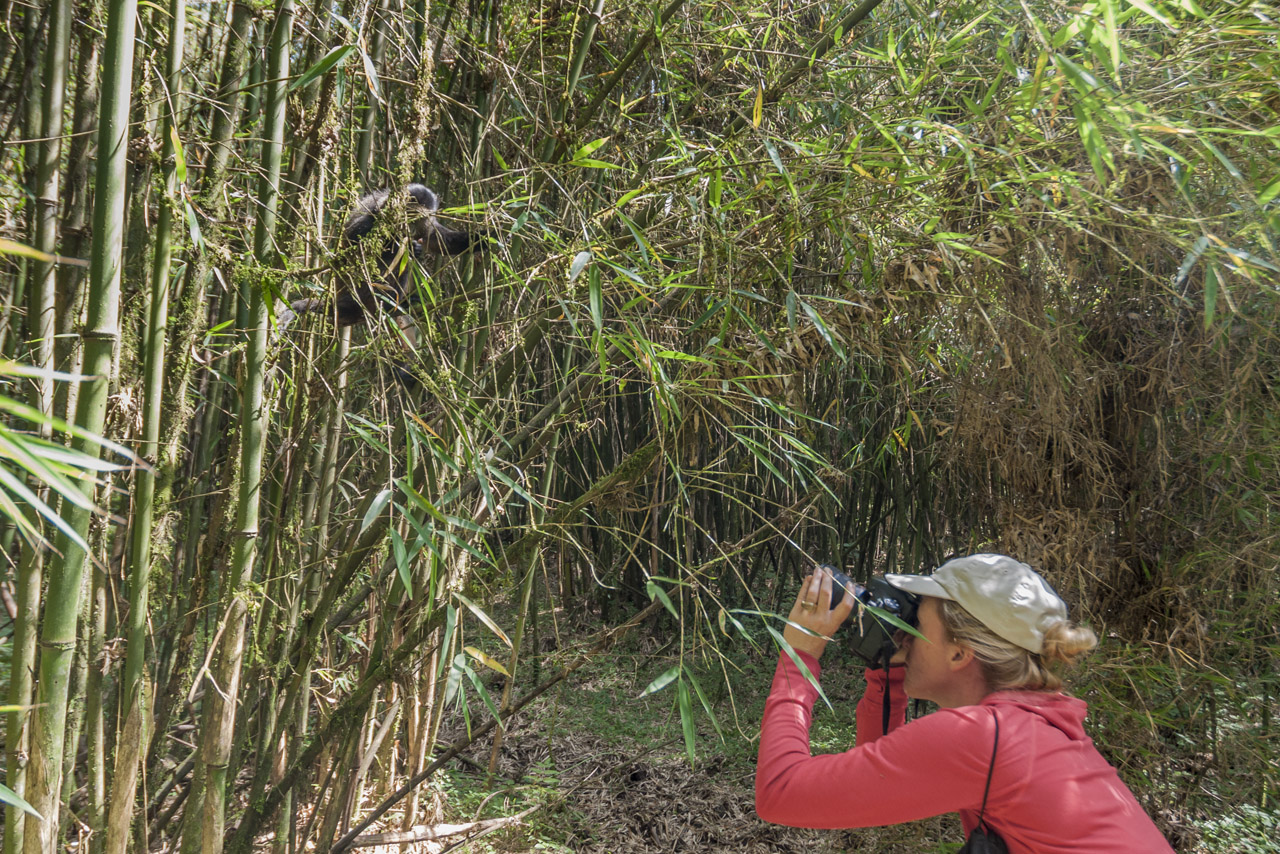
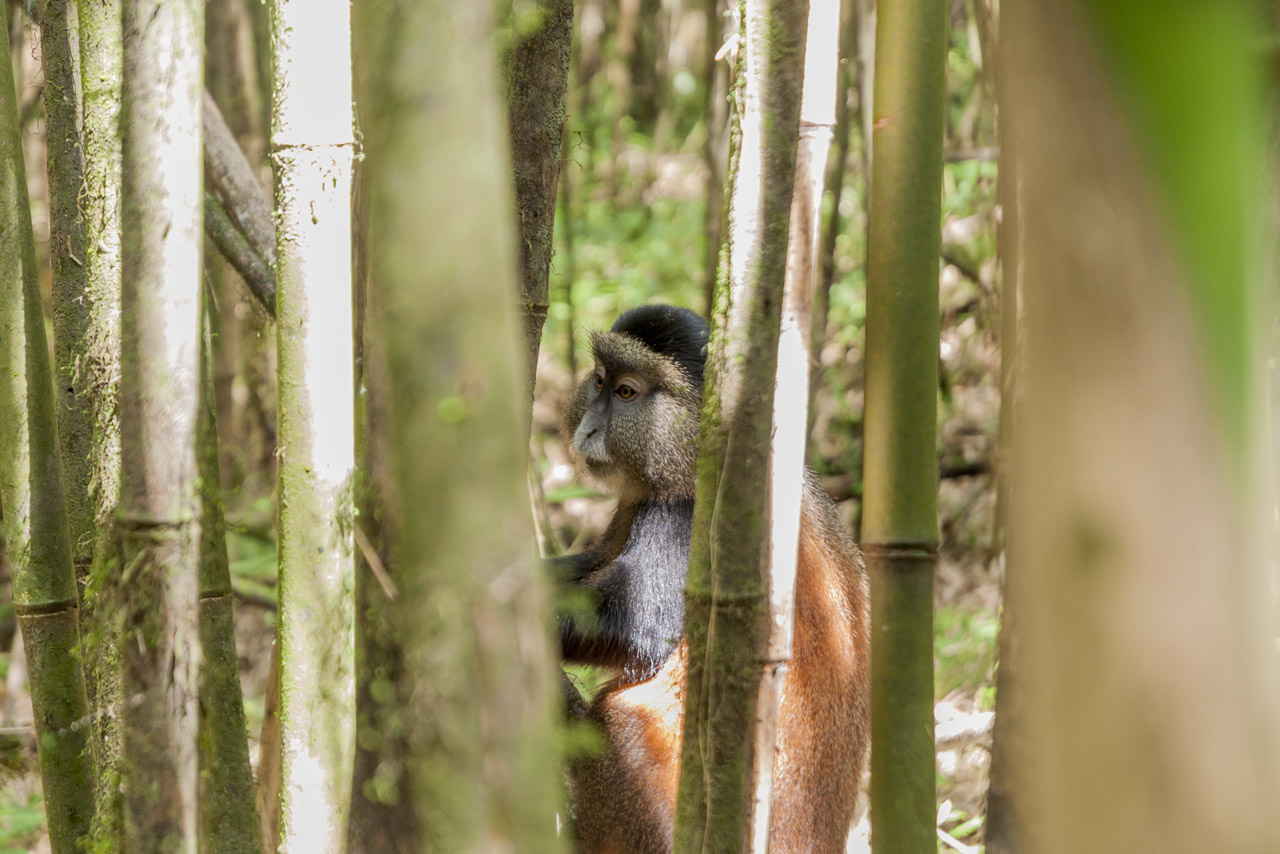
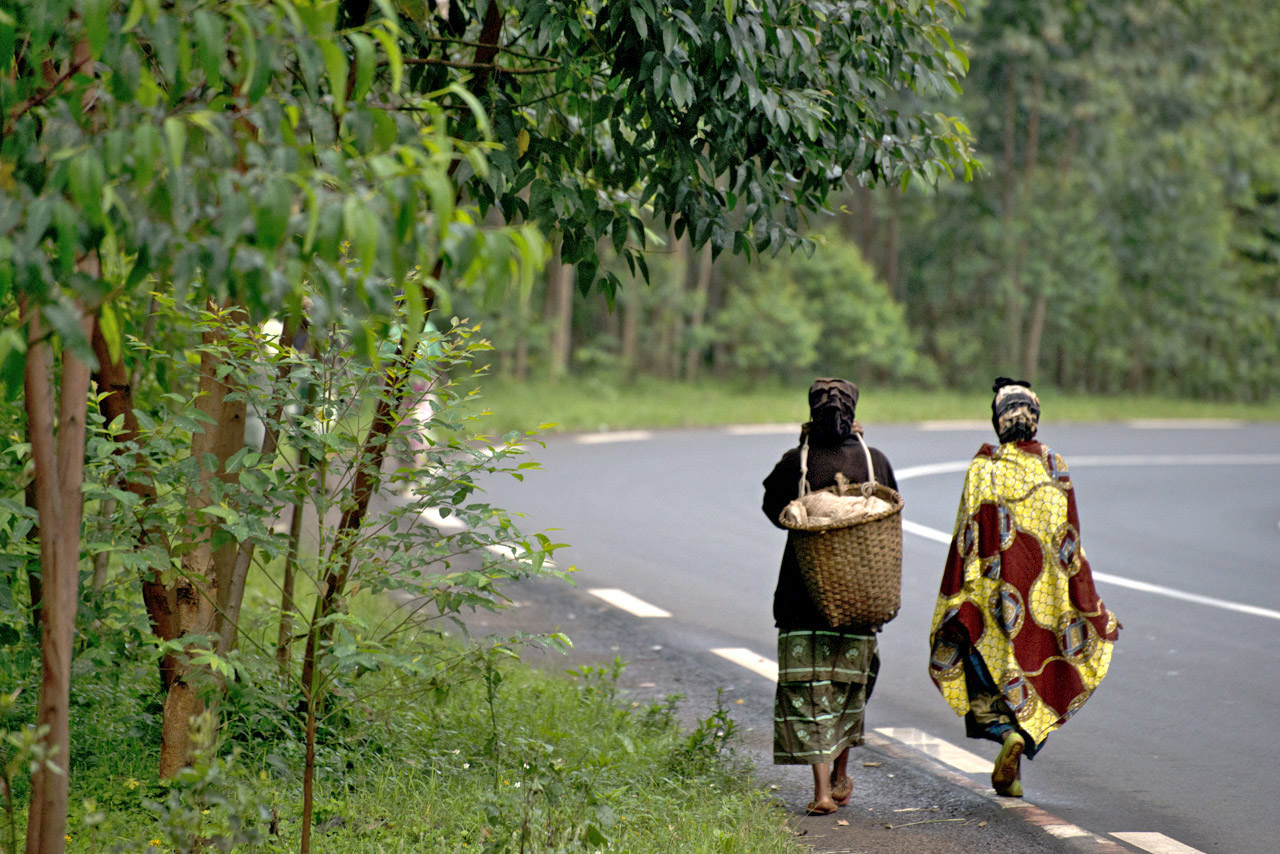
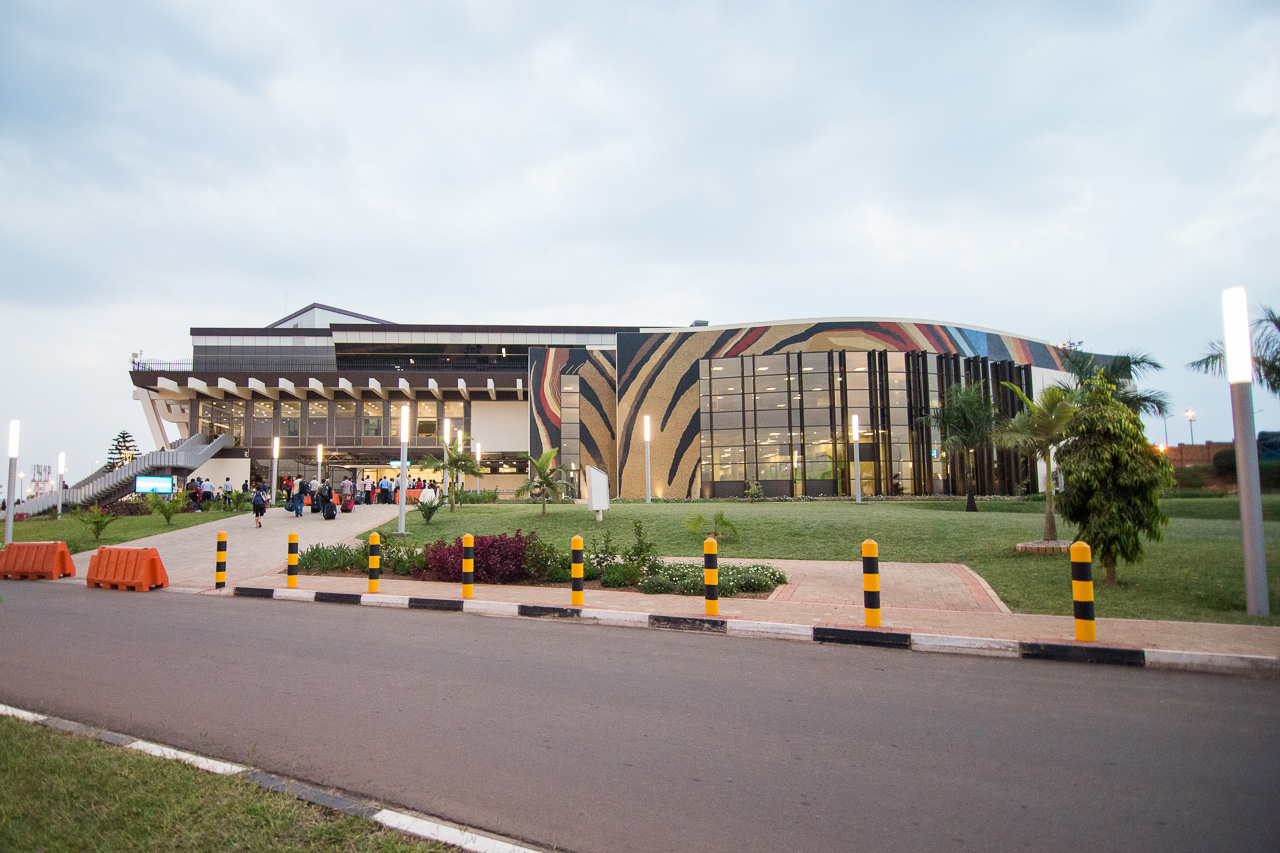
Basic Information
Individual journey. The journey will be planned on your preferred dates.
Duration 10 nights. Min 2 guests. Minimum age 15 years. Trip vice versa possible. Weight limit of luggage 15 kg. Luggage in one soft bag only.
Includes all transfers from Arusha to the hotels/camps to Kigali
- Kahawa Cottages: Standard Room. Breakfast.
- Crater's Edge: Standard Room. All meals, drinks (except premier brands), laundry service.
- Laba Migration Camp: Standard Room. All meals, drinks (except premier brands), laundry service, private vehicle / guide provided by the lodge.
- Kigali Serena Hotel: Superior Room. Breakfast.
- Virunga Lodge: Standard Banda. All meals, drinks (except premier brands), laundry service.
1 x Gorilla Trekking
1 x Golden Monkey Trekking
Learn more about these areas












